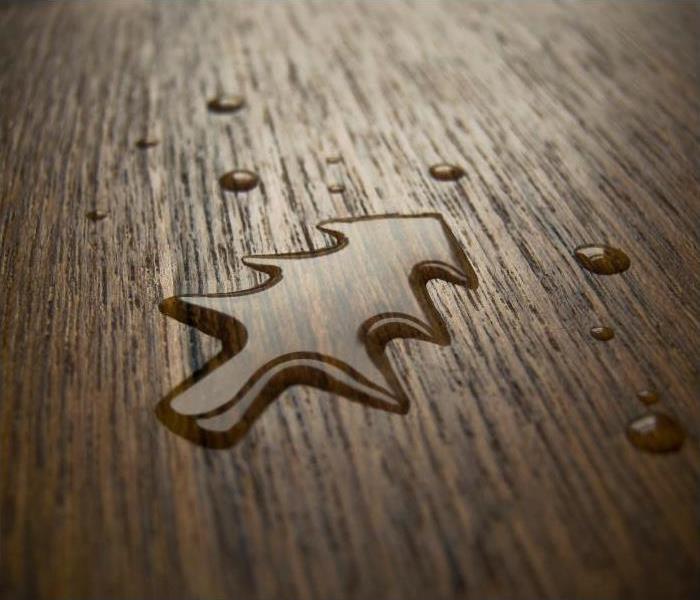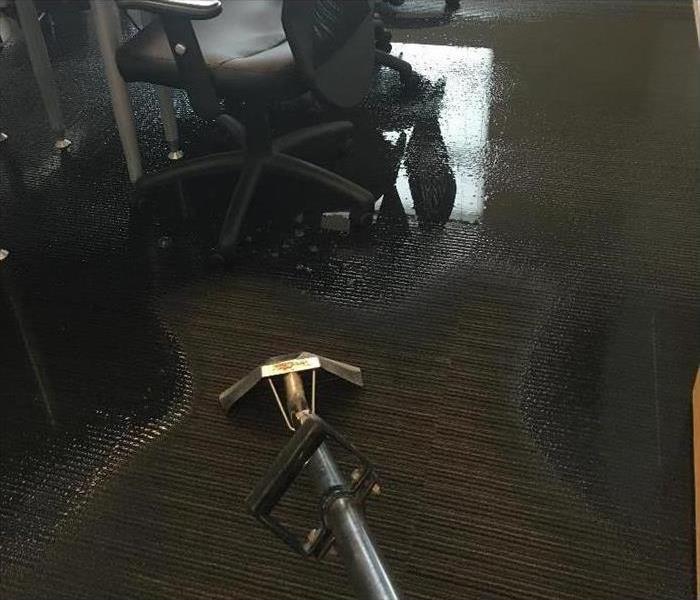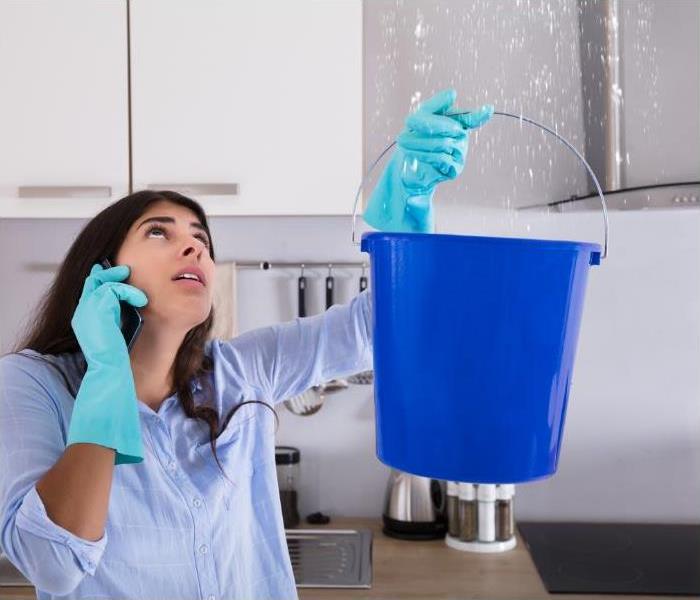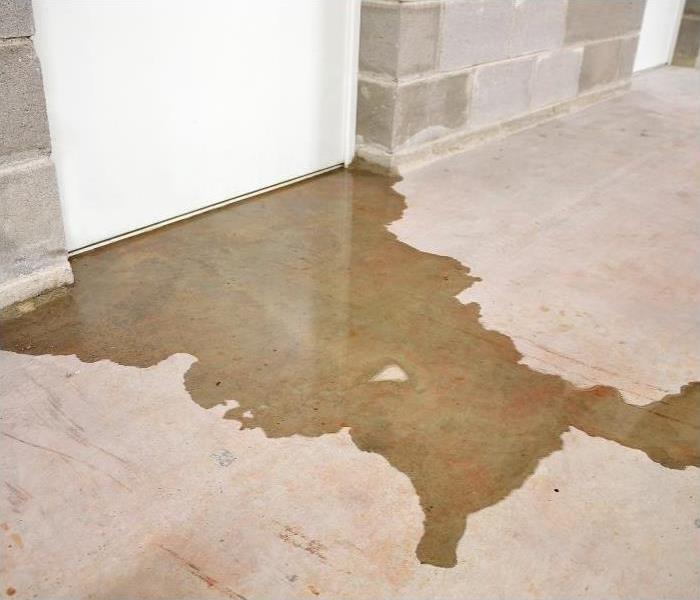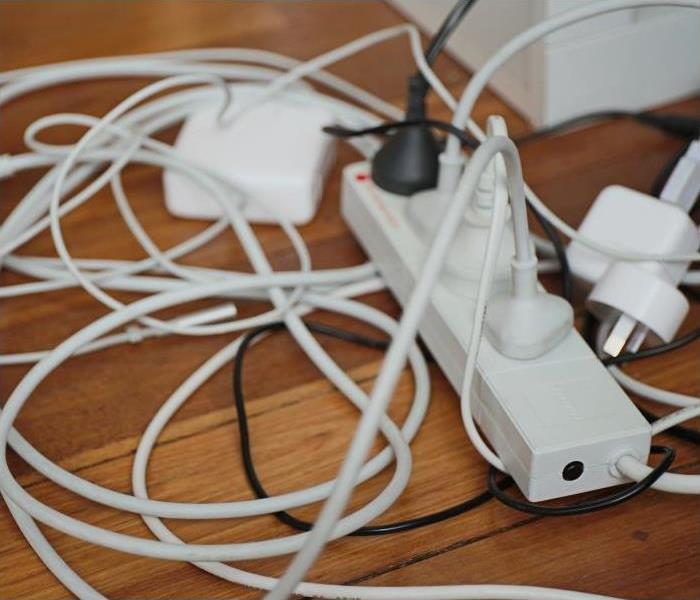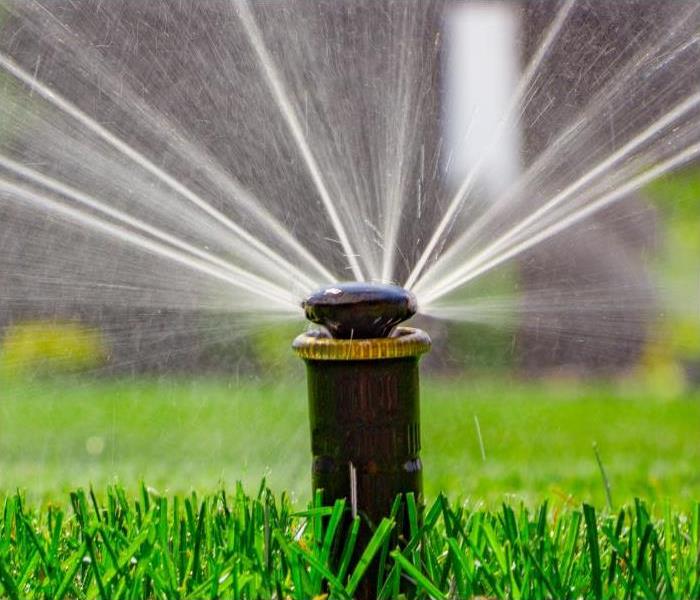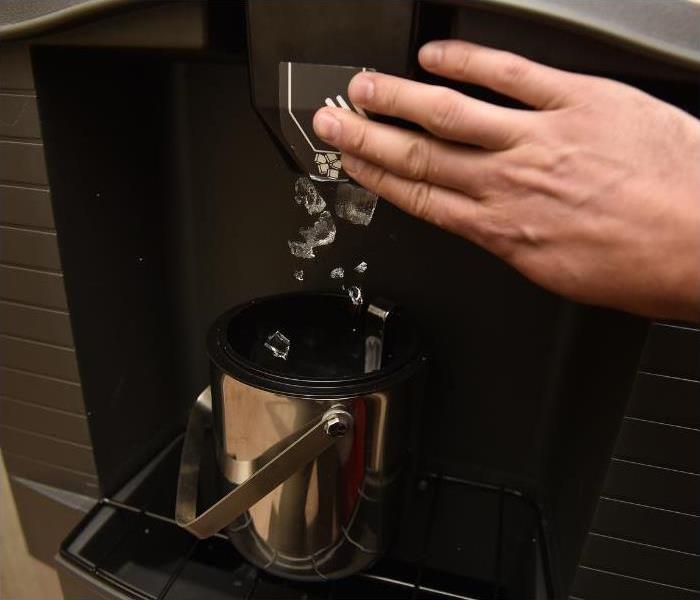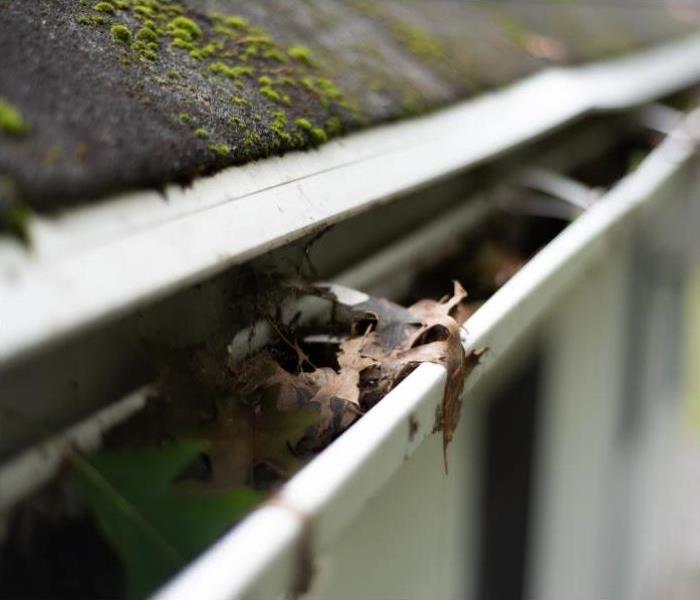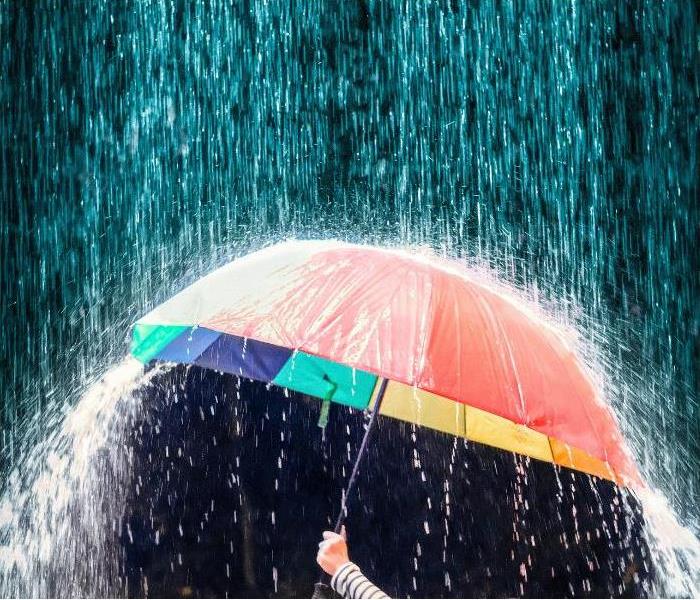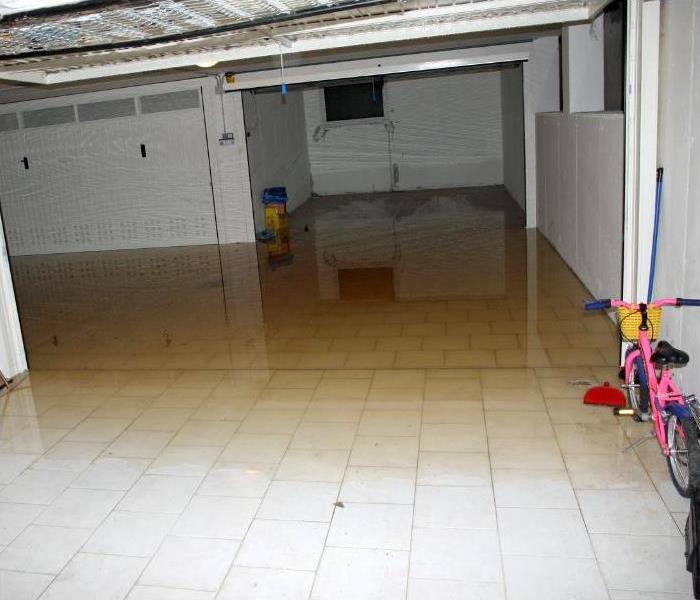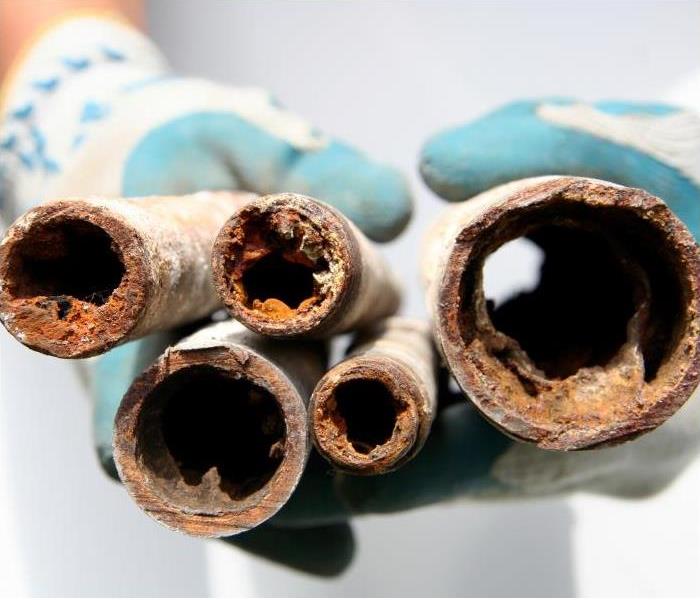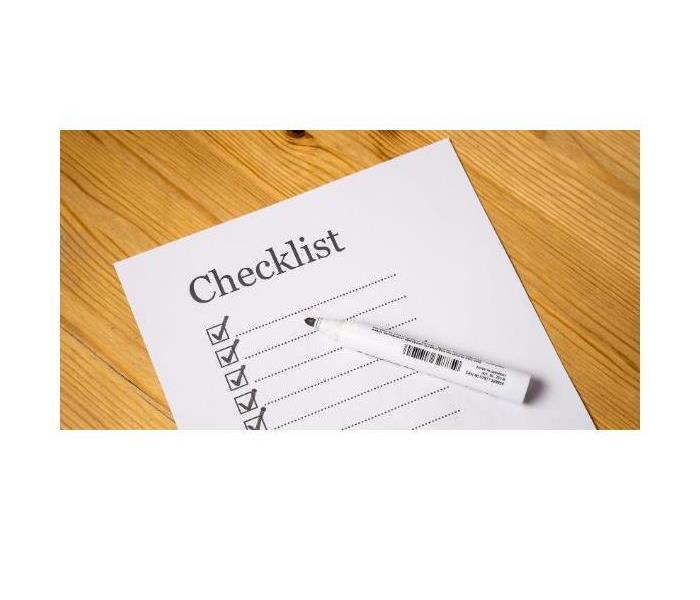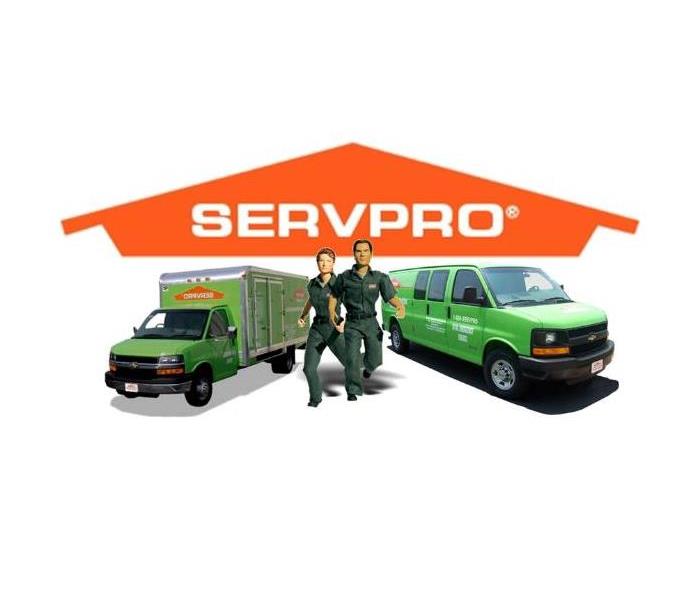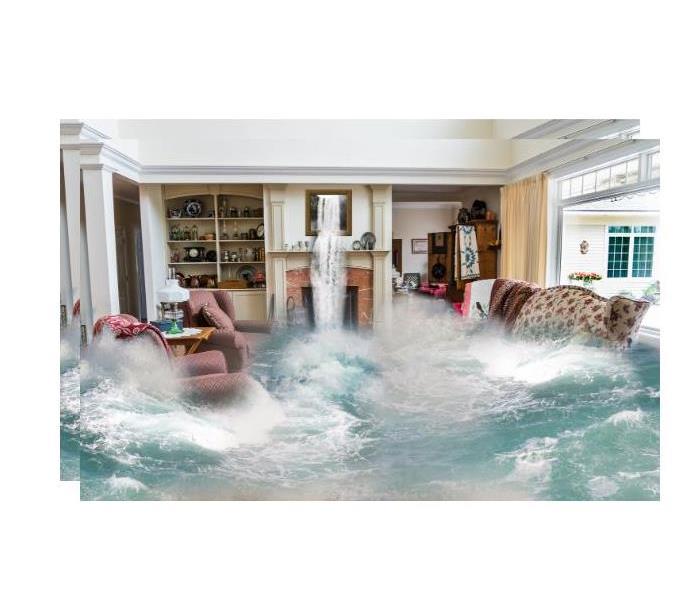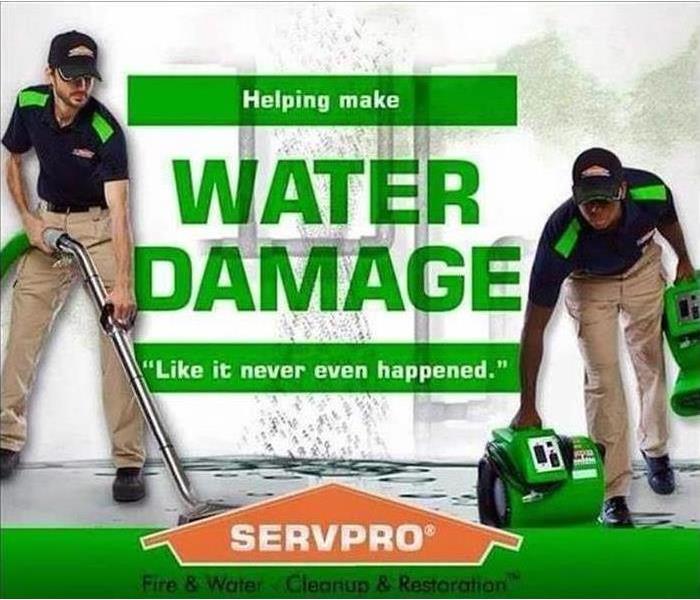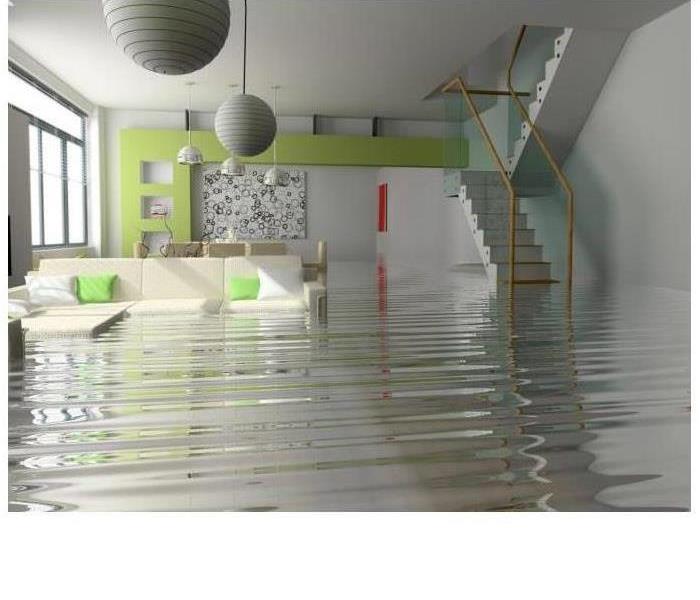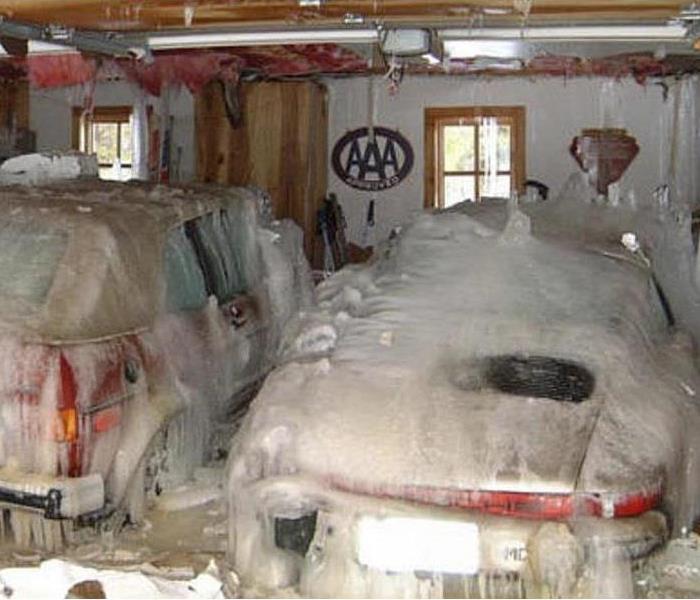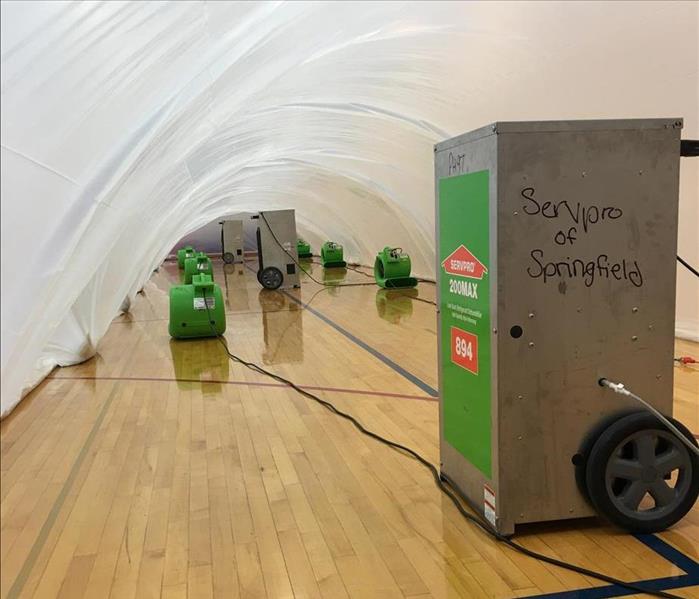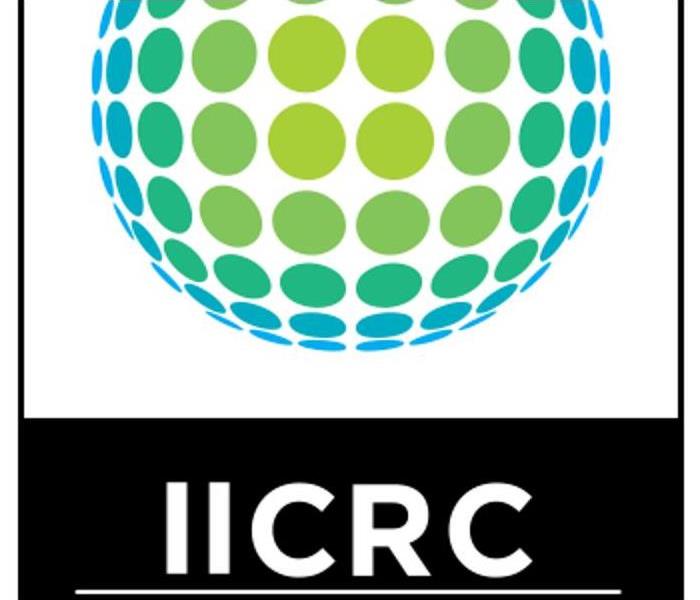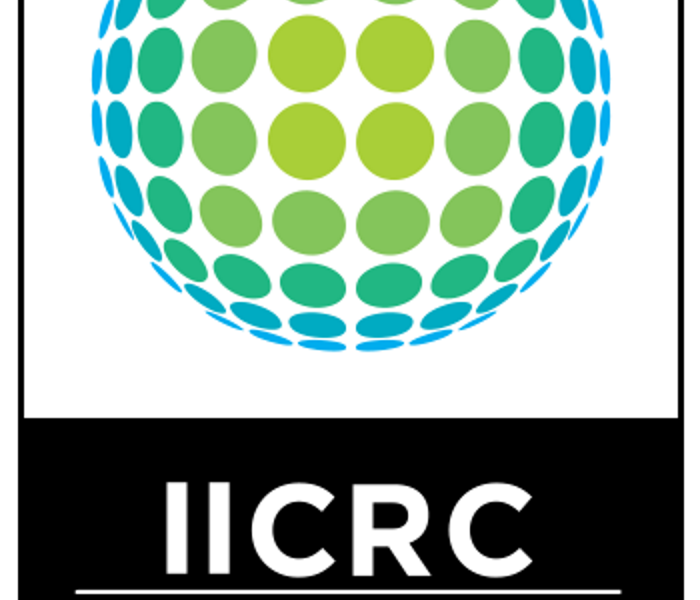Recent Water Damage Posts
Water Damage?? What To Do Until SERVPRO Arrives
8/1/2024 (Permalink)
If you have a water damage from a clean source such as water supply lines, sink overflows, tub overflows, or appliance malfunctions, here are some things to do before SERVPRO professionals arrive:
- Shut off the source of the water.
- Turn off circuit breakers for wet areas of the building if the access panel is safe from electrical shock.
- Remove as much excess water as possible by mopping and blotting
- Wipe excess water from wood furniture after removing lamps and tabletop items
- Remove and prop up wet upholstery cushions for even drying
- Place aluminum foil or wood blocks between furniture legs and wet carpeting
- Remove to a safe, dry place any paintings, art objects, computers, documents and other materials that are valuable or sensitive to moisture.
- Use wooden clothespins to keep furniture skirting off damp floors
- Hang draperies with coated hangers to avoid contact with wet carpeting or floors
SERVPRO of Springfield and Sangamon, Morgan, Cass, Macoupin, Montgomery Counties is available 24/7 and can be reached at 217-528-7775.
Ice Maker Tips to Help Prevent Water Leaks
6/3/2023 (Permalink)
When an ice maker is added to an existing home, the installer will use an ice maker valve, a small metal saddle secured to a cold water pipe near the refrigerator. The ice maker kits often come with a small clear plastic water pipe attached to the valve and to the water inlet on the refrigerator.
That piece of flexible plastic tubing is the most likely suspect for a leak. Pinholes in the tubing go unnoticed during installation and remain unnoticed for years, hidden behind the refrigerator. Over a long period of time, hundreds of gallons of water seeping from the tubing can lead to serious structural decay and damage to the wall and floor systems around the refrigerator.
Modern homes usually have a shut-off valve installed in a wall panel behind the refrigerator where soft copper tubing is used to connect the valve to the refrigerator. Pinhole leaks or fractures of copper tubing are possible, but not as likely as in the plastic tubing.
Two things you can do to prevent water damage from an ice maker:
- Use copper tubing for the connection.
- Install a battery-operated flood alarm. Properly positioned, the inexpensive battery-operated alarm will respond if the unit detects water from a leak. The alarm can be used in the kitchen, in a basement, near water heaters or any other source of water that could leak and cause damage.
Battery-operated flood alarms can be found at most hardware stores or online.
SERVPRO of Springfield and Sangamon, Morgan, Cass, Macoupin, Montgomery Counties is available 24/7 and can be reached at 217-528-7775.
Power Washing Dangers
10/1/2022 (Permalink)
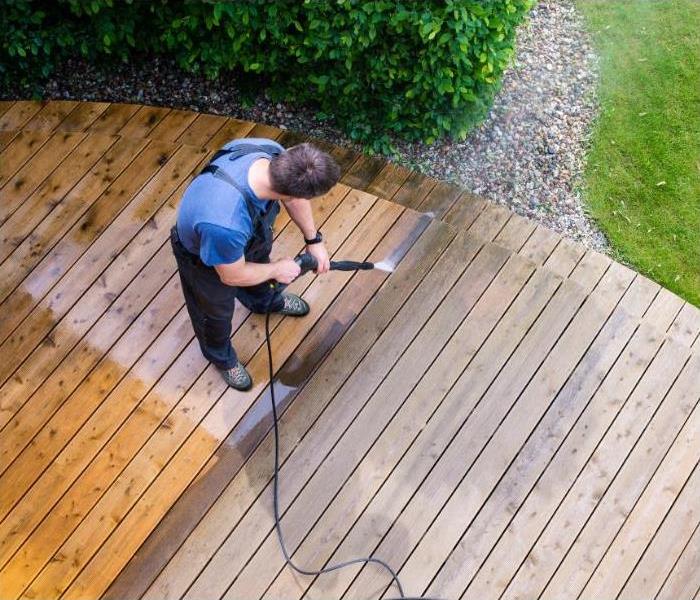 Powerwashing
Powerwashing
During the summertime when warmer weather is all around, many people take extra time to enjoy the great outdoors. Because of this, you may notice the outside of your house for the first time in a long time. Or more specifically, the growing mold along the side of the house and the dirt-speckled concrete. This is where the power washing industry comes in. Many homeowners will hire a company or rent the equipment to power wash their houses and clean away the gunk. What many can sometimes forget is that power washing can cause real damage to your home if not done carefully. Pressure washers can spray water at a pressure of anywhere from 2800 to 4000 psi. That’s why it’s so important to know what types of damage to watch for while getting your house washed. WASHH Power Washing Experts have a list of damages that are common accidents when it comes to power washing;
- Stripped paint
- Shredded window screens
- Loose and dented vinyl siding
- Loose brickwork from cut mortar
- Damaged seals on windows
- Splintered or cracked wood
- Algae, mold, and mildew growth from water build-up beneath the siding
When done correctly, power washing is a very effective way to clean the most stubborn gunk off your house and get it sparkling clean. But with that amount of pressure, it’s crucial to make sure that whoever is in control knows how to properly control the spray and clean the house. So the next time you notice mold creeping up your siding, go ahead and power wash. Just remember to do it responsibly.
As always, if disaster strikes, SERVPRO of Springfield and SERVPRO of Morgan, Cass, Macoupin & Montgomery Counties are always here for you. We can be reached 24/7 at 217-528-7775.
Keeping Toilet Water in the Bowl
9/3/2022 (Permalink)
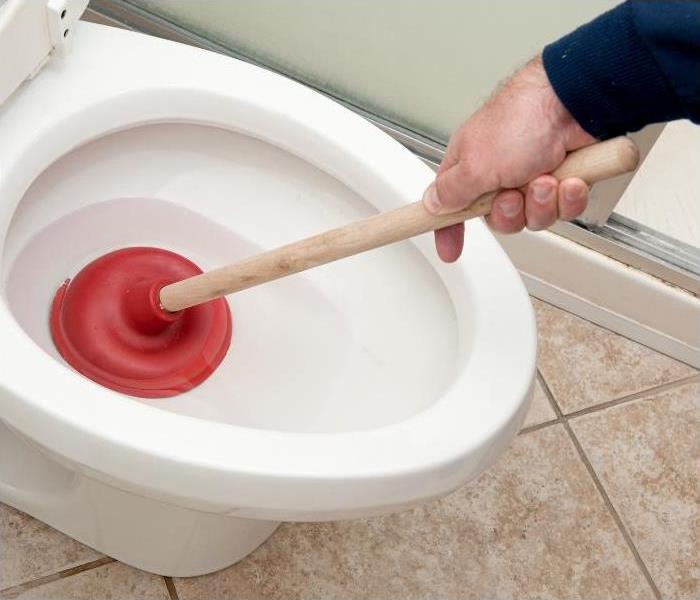 Unclog the Toilet
Unclog the Toilet
The only thing worse than water damage is dirty water damage. And nothing exemplifies that more than when your toilet suddenly begins to overflow. And if you find yourself unprepared without a plunger, the problem can quickly become even worse and all over your bathroom floor. And in an emergency, you can’t afford the time to go out and buy a plunger. So you have to find some alternative to stopping the flow quickly. The Family Handyman magazine has provided a list of “plunger alternatives” that could be a real help to you if you find yourself in a sudden bathroom emergency;
- Start with dish soap to help lubricate the clogged pipe and allow the lodged debris to slide down more easily
- Adding hot water might move things along and dislodge the clog
- Unravel a wire coat hanger until it’s straight then push one end of the wire into the clogged area and provide the debris until it becomes free
- Pour one cup baking soda and two cups vinegar into the toilet, then allow it to fizz for a half hour and try to flush again
- Empty as much water from the bowl as you can, fill a large plastic bottle with warm water, place your thumb over the top of the bottle and fit the top end of the bottle into the outlet at the bottom of the toilet, remove your thumb and squeeze the bottle so the water inside shoots down the pipe to clear the clog
If this clog isn’t able to be cleared by any home remedies, even a plunger, call a plumber immediately to help. But a clog that bad is extremely rare. Additional actions you can take to try and prevent clogs come from regular cleaning, selective toilet paper use, and other small actions to avoid such a disaster. So if you ever find yourself without a plunger and in great need of one, try one of these simple remedies to help. And keep that certain water off your floor.
As always, if disaster strikes, SERVPRO of Springfield and SERVPRO of Morgan, Cass, Macoupin & Montgomery Counties are always here for you. We can be reached 24/7 at 217-528-7775.
Fun Facts About Water
8/5/2022 (Permalink)
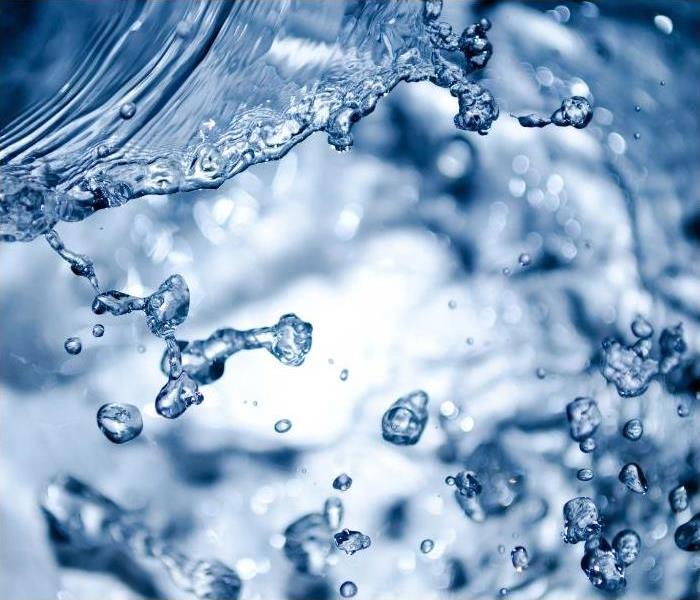 Water
Water
Water is the one thing all living things have in common. We all need it to live and function. Yet even still there’s a lot about water that most of us don’t even think about when we drink a glass. After all water like anything else is made up of unique elements that can both benefit and harm people under the right circumstances. The United States Environmental Protection Agency has a list of interesting facts about our planet’s water supply to help us understand our water better;
- There is the same amount of water on Earth as there was when the Earth was formed
- Frozen water is lighter than water, which is why ice floats in water
- Water is composed of two elements, Hydrogen, and Oxygen.
- Water expands by 9% when it freezes
- Nearly 97% of the world’s water is salty or otherwise undrinkable
- The average total home water use for each person in the U.S. is about 50 gallons a day
- 2% of the world’s water is locked in ice caps and glaciers
- A person can live about a month without food, but only about a week without water
- Water regulates the Earth’s temperature just like it does in the human body
- 75% of the human brain is water and 75% of a living tree is water
- In the human body, water carries nutrients and oxygen to cells, cushions joints, protects organs and tissues, and removes wastes
Water is very interesting when you really think about it. Several different bodies of water can have totally different genetic makeup. This means whether or not it’s safe to drink could go either way. And even so, we still need water to survive. So make sure you know a little something about water. You might be surprised what you can uncover about this unique liquid.
As always, if disaster strikes, SERVPRO of Springfield and SERVPRO of Morgan, Cass, Macoupin & Montgomery Counties are always here for you. We can be reached 24/7 at 217-528-7775.
Overhydration: A Serious Water Problem
7/1/2022 (Permalink)
 Overhydration
Overhydration
We tell kids all the time about the dangers of dehydration. How they need to make sure they’re drinking enough water especially while they’re outside or exercising. What we might not realize is that while dehydration is dangerous, so is the opposite extreme, overhydration. Overhydration can lead to water intoxication. This occurs when the amount of salt and other electrolytes in your body becomes too diluted. If your electrolytes drop too low too quickly, it can be fatal. That’s why it’s so important to know the symptoms of overhydration and what to do if you’re experiencing it. Healthline has a list of both the symptoms and treatments of overhydration to help you be prepared;
- Symptoms
- Nausea and vomiting
- Headache
- Changes in mental state such as confusion or disorientation
- Muscle weakness, spasms, or cramps
- Seizures
- Unconsciousness
- Coma
- Treatments
- Cutting back on your fluid intake
- Taking diuretics to increase the amount of urine you produce
- Treating the condition that caused the overhydration
- Stopping any medications causing the problem
- Replacing sodium in severe cases
The best way to avoid overhydration is simpler than it may seem. Let thirst also guide you when exercising. If you’re thirsty, drink more. It really is as simple as that. Getting tired and thirsty during exercise or on hot days is completely natural. And not drinking during those activities can be very dangerous. But so is overcompensating by constantly drinking. Like anything else in life, the key is balance. Drink when your body tells you it’s time and exercise responsibly. That way you can avoid major health problems and still have a ton of fun.
As always, if disaster strikes, SERVPRO of Springfield and SERVPRO of Morgan, Cass, Macoupin & Montgomery Counties are always here for you. We can be reached 24/7 at 217-528-7775.
How to Unclog Your Sink
6/2/2022 (Permalink)
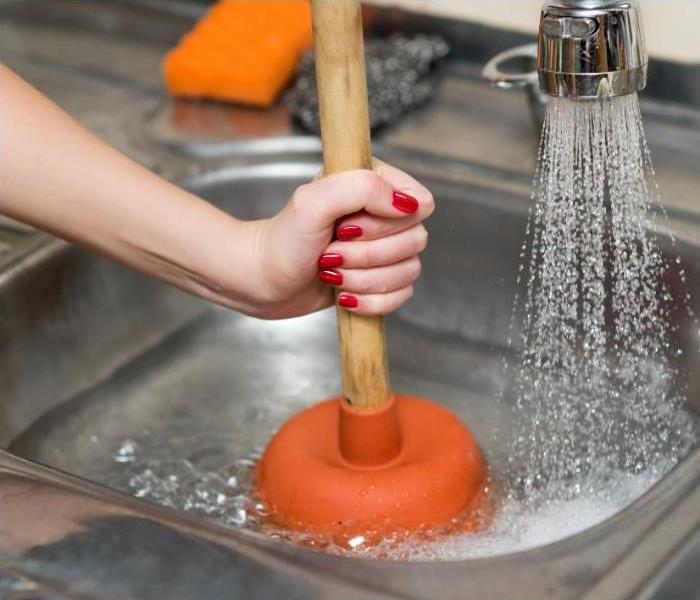 Sink
Sink
When you notice your sink draining slower or not at all, it’s more often than not a sign that your sink has a clogged drain. Whether you can see it on the surface of your drain, or it’s lodged somewhere in the pipes, it’s something that needs to be dealt with as soon as they can. Otherwise, the blockage can become bigger and even harder to remove. If you notice your water drainage starting to slow, try one of these tricks provided by the Home Depot;
- Carefully pour boiling water into the drain and allow it to flush out the clog and repeat as needed
- Pour baking soda and white vinegar, use a sink stopper to plug the drain for about 20-minutes, then pour boiling water down the drain slowly and repeat until the block has been cleared
- Use a plunger in a small puddle of water in the sink
- You can use a plumbing snake to clear a clogged bathroom sink
- Attach a wet-dry vac hose to the stopper pipe and connect the other end to a vacuum, pulse the power on and off a few times to help get the clog moving, and then sucked out
If none of these methods work, call a plumber or another qualified professional to help. And never try to continue using a sink when it’s badly clogged. Always be prepared and make sure you’re aware of your drain ahead of time. If it starts to slow, try one of these tricks right away. It might save you some hassle later on.
As always, if disaster strikes, SERVPRO of Springfield and SERVPRO of Morgan, Cass, Macoupin & Montgomery Counties are always here for you. We can be reached 24/7 at 217-528-7775.
I Dropped My Phone in the Toilet!
5/4/2022 (Permalink)
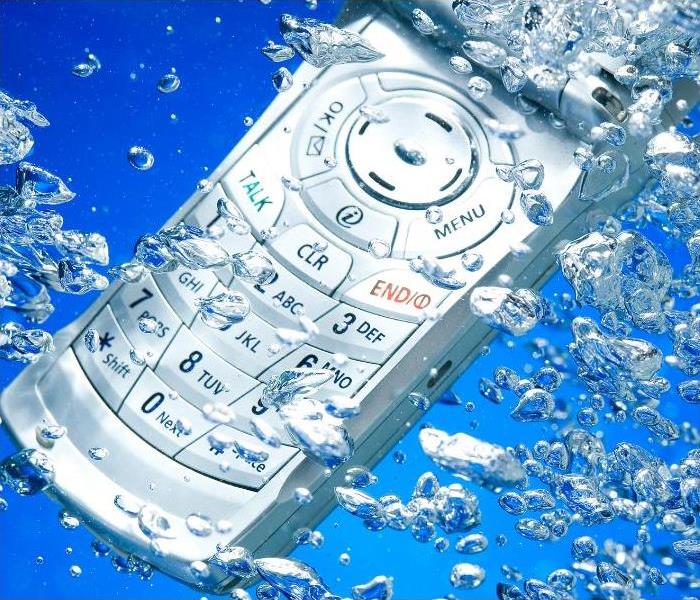 Wet Cellphone
Wet Cellphone
Nothing scares a person quite like the feeling when you drop your cellphone into the water. The world freezes for just an instant and then it’s a race to grab it as quickly as you can. Cellphones, like any other electronic, do not mesh well with water. Even so-called “waterproof” phones can’t fully protect from the water. So when your phone has completely submerged in water, it’s vital that you drain the water as fast as you can before it does permanent damage. Android Authority has a step-by-step list so you can safely get the water out of your phone before it causes damage;
- Quickly remove your phone from the water
- Do not turn on the phone or plug it in
- Don’t shake or blow into the device
- Do not apply any heat to the phone
- Open the phone casing
- Do not remove any of the components
- Try to dry the exterior with a paper towel
- If you have a small vacuum cleaner attachment, you can use it to suck away water in crevices
- Put the phone in a Ziploc bag full of rice and let it rest there for about two or three days
- Take the phone out of the bag and see if it works
- When all else fails, take it to your local phone retailer and see what they can do
With the safeguards most phones have built into them now, even a completely submerged phone will be ok if you get it out and dry it quick enough. Just remember that even with those safeguards, a phone that has been potentially exposed to water can produce an electrical shock that can seriously injure a person. So the next time you drop your phone into the water try following these steps and save yourself the cost of a new phone.
As always, if disaster strikes, SERVPRO of Springfield and SERVPRO of Morgan, Cass, Macoupin & Montgomery Counties are always here for you. We can be reached 24/7 at 217-528-7775.
Watering Your Christmas Tree
12/4/2021 (Permalink)
Even though plastic Christmas trees have become more popular in recent years, there are still plenty of people who prefer the scent and sight of a real live Christmas tree. They enjoy picking out their Christmas tree, bringing it home, and keeping it lush and green throughout the season. But if you choose to go this route this holiday season, it’s important to remember that your Christmas tree is a living plant. And like any other household plant, it must be cared for properly or its life will wither away very quickly. The Home Depot has a list of tips to help you make sure your tree lasts the entire Christmas season;
- Gather tools and materials ahead of time
- Set up stand and water before going to buy your tree
- Get tree into water as soon as you can
- Water daily because a 6-foot Christmas tree requires at least one gallon of water each day to stay fresh
- Try a tree watering system
- The size of your stand should be proportionate to the size of your tree
- Do not let the water level in the stand fall below the base of your Christmas tree
- Use a spray bottle to mist the branches and needles once a day to help prevent them from becoming brittle and breaking off too soon
The debate over plastic versus real Christmas trees is one that has been going on for years. And it most likely won’t be settled any time soon. But both can become absolutely beautiful if decorated and maintained with care. So if you’re sporting a live Christmas tree this year, make sure you know how to water it properly and keep it bright and green.
Source: https://www.homedepot.com
As always, if disaster strikes, SERVPRO of Springfield and SERVPRO of Morgan, Cass, Macoupin & Montgomery Counties are always here for you. We can be reached 24/7 at 217-528-7775.
The Tools to Banish Water Damage
11/4/2021 (Permalink)
No matter what time of the year it is, we here at SERVPRO of Springfield are always ready to help you with your water damage clean-up. But why pick us in particular? There are a number of reasons that we’re the best in the business. But one of the best is the advanced technology we use to clean up and restore your home as swiftly as we can. But what exactly do we have? And what do we do with it? To answer that, we have a full list of the equipment we use and what it does to help us help you;
- Moisture Detection and Measurement Equipment
- An infrared camera may be used to identify water locations for thorough water removal.
- Sensitive moisture detectors, hygrometers, and other meters measure the extent of moisture saturation
- Water Extraction Equipment
- Submersible and gas-powered pumps for continuous pumping of high-level water.
- Truck-mounted and portable extraction units perform efficient water removal.
- Drying Equipment
- High-speed air movers cause moisture to evaporate at a faster pace
- Industrial-grade dehumidifiers pull the water vapor from the air.
- Odor Removal and Deodorization
- Air scrubbers
- Thermal foggers and deodorization agents
- Sanitizing Agents, Germicides, and Anti-Microbial Treatments
- Deodorization products control odors from excessive moisture.
- Disinfection products stop the growth of bacteria, fungi, mildew, and other harmful microorganisms.
When it comes to our restoration and clean-up technology, we don’t mess around. Our advanced machines and technology are just one of the many reasons we are the best in the business. We use only the best to make sure your home is restored and cleaned to the point that you can’t even tell there was ever water damage. That’s why our motto is “Like it never even happened.”
As always, if disaster strikes, SERVPRO of Springfield and SERVPRO of Morgan, Cass, Macoupin & Montgomery Counties are always here for you. We can be reached 24/7 at 217-528-7775.
The 3 Types of Water Damage
10/1/2021 (Permalink)
Water damage can be one of the most time-consuming repair jobs that come up when in your home. First, you have to find the leak or shut off the water, then drying alone takes hours, replacing the irretrievable items can take even longer, and then you have to find a way to try and prevent it from happening again. But despite all the places that water damage can come from, there are actually only three different types of water damage that you will come across in your home. The Balance has a list of these three different types of water damage to help you know what they are and where they come from;
- Sewer or Water Backup is when a pipe or drain becomes clogged and water becomes trapped behind it. This can build up pressure to a dangerous level and burst pipes if the clog becomes too dense. Or it can affect the water flow around your house, reducing the pressure to the point it becomes too weak.
- Overflow and Discharge are when the flow of water becomes too much for the pipe or container it is occupying. If left undetected the water can continue to build up in the area and spill into others, resulting in a wider range of damage and more problems than if it had been discovered sooner.
- Flooding is when water escapes from its container or pipe and begins filling rooms or spaces beyond where it started flowing. Flooding can ruin entire rooms of your home if left attended for any amount of time. Flooding typically happens in basements where groundwater seeps into the room and there is no filtering system to keep it out.
Knowing the types of water damage can help you know what to look for when it comes to pinpointing the source and cause of the water damage in your home. Water damage comes from any number of places such as gutters, groundwater, or pipes in the house, but when that water gets loose it can cause major problems and clean up. So take the time to familiarize yourself with all the possibilities ahead of time and protect your home.
Source: https://www.thebalance.com
As always, if disaster strikes, SERVPRO of Springfield and SERVPRO of Morgan, Cass, Macoupin & Montgomery Counties are always here for you. We can be reached 24/7 at 217-528-7775.
Most Common Water Damage Sources
9/2/2021 (Permalink)
Between the ground, the sky, and the pipes in your house, it seems that everywhere you look there is a source of water damage just waiting to get into your house. It can seem like too much to prepare for entirely. And even worse is when you have a leak but you can’t seem to pinpoint where it’s coming from. West Bend Mutual Insurance Company has a helpful list of the most common sources of water damage to help you prepare for wherever the water in your home might be coming from;
- Severe weather can damage several areas of your home, resulting in the rain being able to get into the house
- Leaking water heaters can leak by too much tank pressure and can flood quickly
- Clogged gutters won’t be able to let rainwater flow properly away from your property and will instead overflow the gutters, run down the side of the house, and cause water damage to the ceiling, walls, and floors
- A malfunctioning sprinkler system or an accidentally set off sprinkler system causes considerable water damage
- Leaking pipes from a sink or in a wall can cause massive damage to your cabinets or wall
- Condensation from AC if the drain pan is damaged, or the condensate drain line is clogged
- Blocked drains can easily back up and eventually cause flooding
- Washing machine water supply lines are under constant water pressure and the laundry room will be flooded in minutes if you don’t shut off the water source
By having some idea of what sources of water damage cause which types of damage, it can be easier to try and find the source of the damage. And it will allow you to better prepare for the next leak or storm. So if you find a mysterious water leak or a storm has pushed its water into your home, know what the possible sources are and take action right away.
Source: https://www.thesilverlining.com
As always, if disaster strikes, SERVPRO of Springfield and SERVPRO of Morgan, Cass, Macoupin & Montgomery Counties are always here for you. We can be reached 24/7 at 217-528-7775.
When Water and Electricity Mix
8/1/2021 (Permalink)
We all know that mixing water and electricity isn’t a good idea. In fact, if the water damage is extensive enough, the electrical wires can produce a lethal shock. But what is the full extent of the damage and dangers that come when water damage reaches your electrical wires? Are there any dangers about it that we may not know? Hunker.com has a helpful list of the effects water damage can have on your electrical wires and the systems they attach to so you can be fully aware of the dangers;
- Unexposed Wiring is typically very resistant to water and other liquids because of the plastic covering as long as the covering remains intact
- Exposed Wiring is very dangerous as it has no protective covering
- Everyday spills on electrical wires are typically on so long as the mess is cleaned quickly and the electrical wire is off
- Flooding or other types of water damage around exposed electrical wires can cause corrosion in the wire and make it dangerous to touch
- A damaged wire can send out a surge of 169 volts, seriously injuring and possibly killing someone
- Damaged wiring can also cause surges that can damage the electrical devices they are attached to
- A surge from a damaged wire can also result in an electrical fire if allowed to remain on for too long
If there is flooding or other water damage around your electrical wiring, the best course of action you can take is to turn off the electricity to the area and unplug the devices that are in danger, exposed or not. And taking the time to manually dry them quickly is perhaps not entirely necessary, but a good idea nonetheless. So keep your family and home safe and take care of those wires.
Source: https://www.hunker.com
As always, if disaster strikes, SERVPRO of Springfield and SERVPRO of Morgan, Cass, Macoupin & Montgomery Counties are always here for you. We can be reached 24/7 at 217-528-7775.
Sprinkler Water Damage
7/2/2021 (Permalink)
As the summer heat continues to beat down, it can begin to dry out your lawn. So the installation of a lawn sprinkler often seems like the best option to keep your lawn green through the dry summer heat. And while it’s true that a good sprinkler system can keep your lawn green, it can also cause water damage to your home if you’re not careful. Leopold Insurance has a list of the possible damage your sprinkler system can do to your home;
- When the runoff water isn't soaking into the ground, it can pool around the foundation of your house and weaken it
- Excess watering can lead to a leak in your basement
- Runoff water can affect the lawns, gardens, and homes of your closest neighbors against their wishes
- Excess water on sidewalks for a long period of time can damage the cement
- Bikers or cars swerving to avoid the water could lead to damages
- Overwatering can flood your lawn or plants, killing them
- Sprinkler lines or heads can freeze during the winter and burst
A sprinkler system can do a lot of good for your lawn in the heat of the summer. But it’s important to also be aware of the potential hazards and dangers a sprinkler can cause as well. So make sure you know the risks before you install. And no matter what, enjoy your summer.
Source: https://www.leopoldinsurance.com
As always, if disaster strikes, SERVPRO of Springfield and SERVPRO of Morgan, Cass, Macoupin & Montgomery Counties are always here for you. We can be reached 24/7 at 217-528-7775.
Ice Makers Can Leak
6/3/2021 (Permalink)
With summer often comes plenty of iced drinks. And to get those beverages, one must have access to an ice maker of some kind or another. Whether it’s one that’s attached to your fridge or a portable one, a good ice maker can quickly become a summer essential. But like any other device that relies on water, it has the potential to leak and cause water damage. So it’s important to know where to look if and when you suspect your ice maker is leaking. HGTV has a list of what you should look for if you suspect a leak has sprung;
- A small clear plastic water pipe attached to the valve and to the water inlet on the refrigerator is the most common area for leaks and can go undetected for years
- Clogs of ice can form in the dispenser and melt, causing a leak
- Consider using copper tubing for the connection tubes
- Try installing a battery-operated flood alarm near the area where the leak would hit
- Make sure your ice maker or fridge is up to date maintenance wise
While ice maker leaks are not as common a source of water damage like a flooded basement, it’s still a source of major damage if left undetected. So take some time and make sure you know about any leaks that may be in your ice maker. After all who wants water damage to ruin their summer fun?
Source: https://www.hgtv.com
As always, if disaster strikes, SERVPRO of Springfield and SERVPRO of Morgan, Cass, Macoupin & Montgomery Counties are always here for you. We can be reached 24/7 at 217-528-7775.
Clean Gutters, Happy Home
5/2/2021 (Permalink)
While most people look towards burst pipes or groundwater as the cause of water damage, most forget that they also need to look up. The gutters of a home can be equally as hazardous with water damage if they aren’t properly cleaned and maintained. Water can overflow from clogged gutters and flow down the sides of the house. This can lead to cracks in the foundation, mold along the siding, and other problems that can be easily avoided with clean gutters. Fix.com has provided a list helpful tips to help keep your gutters cleaner for longer;
- Watch for sagging gutters
- Occasionally check the flow of water from your downspout during a rainstorm
- Have a tool kit in an accessible location in case you need to do an emergency repair
- Make sure to clean your gutters at least twice a year
- Consider installing screens or filters
- Consider signing up for yearly gutter cleaning services
These simple tips can do a world of good to keep your gutters working properly. A little bit of maintenance can go a long way to protecting your home from water damage. So prepare for your next rainstorm by preparing your gutters.
Source: https://www.fix.com
As always, if disaster strikes, SERVPRO of Springfield and SERVPRO of Morgan, Cass, Macoupin & Montgomery Counties are always here for you. We can be reached 24/7 at 217-528-7775.
The Dangers of the Rain
4/3/2021 (Permalink)
Old sayings get to be old saying for a reason. “April Showers Bring May Flowers” is a classic example. In most areas, April is the month where mother nature typically decides that every other day requires a rainstorm. Unfortunately for those in her path, excessive rainfall can be not only dangerous but also can cause massive damage to your property. And if you’re unaware of the risks you could find yourself in a dangerous situation. The National Institute of Water and Atmospheric Research (NIWA) has a list of hazards to keep your eye out for during the rainy season;
- Flooding can wash away outdoor furniture and plants
- Standing water will weaken and damage foundations
- Too much water can weaken the soil and cause landslides
- Deep puddles on the roads can cause cars to stall if they get caught
- Animals kept outside can stand in standing water and end up with irritated skin
- Excessive rain can overflow the sewers, causing backups and leaks
- Kids outside in cold rain for extended periods of time can catch illnesses much easier
Rain can bring much-needed water to a dry spell or cool down a hot day. And it can be a lot of fun to play in sometimes. But it’s important to remember that just like any other type of weather, too much can be hazardous. And if we’re not careful we could end up in some deep trouble. So stay safe this April and look forward to those May flowers.
Source: https://niwa.co.nz
As always, if disaster strikes, SERVPRO of Springfield and SERVPRO of Morgan, Cass, Macoupin & Montgomery Counties are always here for you. We can be reached 24/7 at 217-528-7775.
Stop My Basement From Flooding!
2/26/2021 (Permalink)
Arguably one of the worst disasters that can befall a homeowner is a flooded basement. Because they are underground, all basements are at risk for flooding. Melting snow, rainstorms, burst pipes, and many others are all common causes for the dreaded “wet basement”. The silver lining however, is that because this problem is so common, there are a number of ways that have been developed to combat this problem. 30 year home renovator, Bob Villa, has compiled a list of tips and tricks that can help anyone waterproof their basement;
- Don’t plant flower beds or bushes that require watering near the edges of your basement
- Inspect and repair gutters and downspouts so water is pointed away from the house
- Consider installing a drainage system inside your basement walls
- Seal the interior of walls with a high-quality waterproof paint
- Rearrange your storage system so that items you want to preserve are off the floor
- Make sure all window wells are sealed in the event of a storm or melting snow
- Fill visible cracks in the cement with hydraulic cement
- Keep your eyes open for wet spots on the walls that could indicate a leak
- Consider buying sensors that can detect leaks or wet surfaces
- Consider investing in a sump pump
These simple things can be the difference between a home disaster or another worry free day. Consider taking these steps to keep your basement and the things in it safe from water disasters.
Source. www.bobvila.com
As always, if disaster strikes, SERVPRO of Springfield and SERVPRO of Morgan, Cass, Macoupin & Montgomery Counties are always here for you. We can be reached 24/7 at 217-528-7775.
Don't Put That in Your Drain
2/11/2021 (Permalink)
There’s a hidden nervous system of water pipes throughout your house. And as long as the water flows, we don’t think about them much, if at all. But like any other part of the house, pipes can cause problems if not properly maintained. A clogged pipe can back up water and cause major water damage if left unattended. And no matter what type of drain you have, there are some simple tips about what not to put down your drain in order to minimize the chance of a massive clog. HGTV has a list of helpful tips to keep your pipes clean and water flowing free;
Do Not Put These Down Your Drain!
- Grease
- Uncooked or unpeeled vegetables
- Coffee grounds
- Egg shells
- Pasta or rice
- Hair
Tips for Keeping Pipes Clean
- Minimize the amount of food you put down your garbage disposal
- Regularly pour a mixture of baking soda and vinegar down the drain
- Every now and then fill your sink with water then release it down the drain
- Do not put harsh drain cleaners down the sink, they can corrode your pipes
- If you notice tubs or sinks filling with standing water when running, the pipe might be getting clogged
Keeping your pipes clean is one of the simplest things you can do to keep your home from water damage. It’s most important to remember that just because something can be put down the drain, doesn’t mean it should. Remember these simple tips and keep that water system clean.
Source: www.hgtv.com
As always, if disaster strikes, SERVPRO of Springfield and SERVPRO of Morgan, Cass, Macoupin & Montgomery Counties are always here for you. We can be reached 24/7 at 217-528-7775.
It's All About Water.... Restoration
9/28/2020 (Permalink)
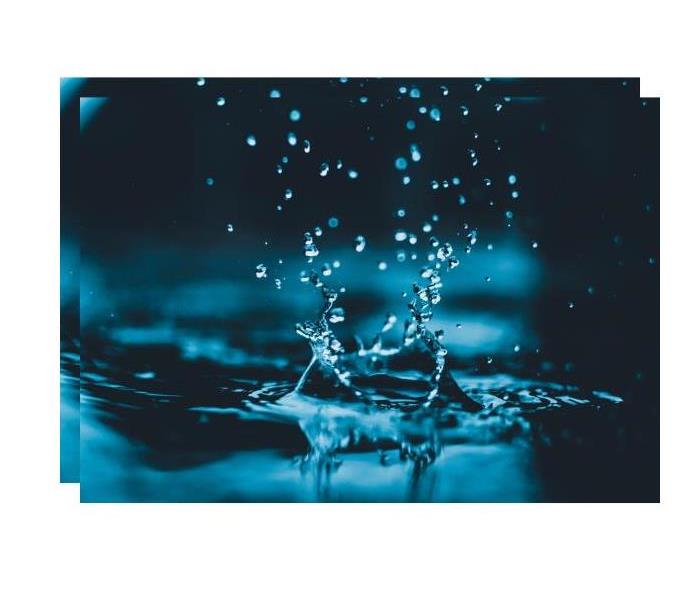 SERVPRO of Springfield is your water restoration specialist!
SERVPRO of Springfield is your water restoration specialist!
Water is a basic human need for survival. We love water! We need water to drink, we need it to bathe, we use it for cooking and cleaning, we even use it for recreation. We use water daily, all of us. It’s something all living things on earth have in common. We all need water for survival and we think of it, in general, as harmless and quite helpful.
It isn’t until you have a pipe burst, a sewer back up, or a leaky roof that you start to see that water can actually be incredibly hazardous and cause major damage. If you have water damage, it’s important to call a professional like SERVPRO of Springfield for all your water restoration needs. SERVPRO of Springfield has been your local water restoration expert for over 30 years. We have put together a few tips to help guide you in the unfortunate event you have water damage.
- If you have water damage, please notify SERVPRO of Springfield as soon as possible. Our staff will help you determine where to go from there. We will help you determine if you need a plumber or any other professional to help stop the source of the water issue. The sooner we can start drying and treating your home, will decrease the possibility of mold growing on the affected surfaces.
- Take photos for your insurance company. Taking photos will help your insurance adjuster determine the extent of damage to your structure as well as personal contents.
- Contact your insurance agent. Be sure to communicate the extent of damage and that you have photos, they may want you to email or text the documentation to them. Be sure to ask any coverage questions you may have as well such as, “What is my deductible?” and “Is there a difference between coverage for my structure and my contents?” Also, it is important to let them know you have hired SERVPRO of Springfield to start the water restoration. SERVPRO of Springfield works directly with your insurance company after your initial call to them to submit the claim. We have a great relationship with insurance companies and adjusters.
As always, if disaster strikes, SERVPRO of Springfield is serving Sangamon, Macoupin, Morgan, Cass, and Montgomery counties and is always here for you. We can be reached 24/7 at 217-528-7775.
SERVPRO of Springfield; Your Water Restoration Company
9/1/2020 (Permalink)
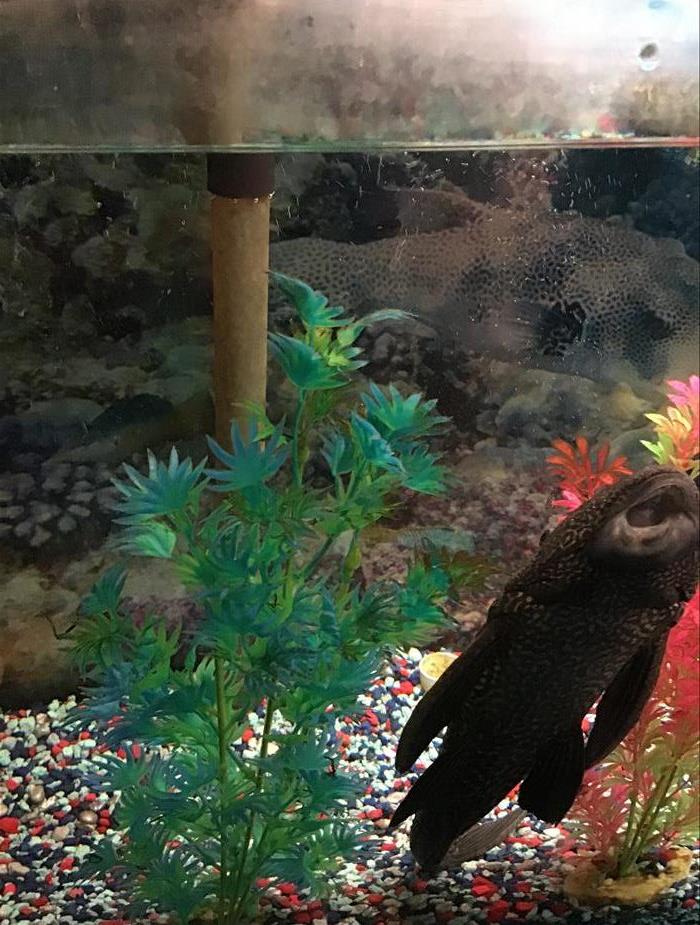 SERVPRO of Springfield is your full service water restoration company, we even clean up after broken fish tanks!
SERVPRO of Springfield is your full service water restoration company, we even clean up after broken fish tanks!
SERVPRO of Springfield has been your water restoration company for over 35 years. Our experience and know how will have you back in your home in no time.
There are many different types of water damage that can occur in your home or work place. We are equipped to handle any water damage, no matter the size of the job.
if you’ve experienced a broken pipe in your home That floods your base to, a leaking faucet that has ruined your floor, or even a toilet that has backed up. We are Here to Help. Our crews will clean and get you and your family safely back into your home.
SERVPRO of Springfield truly appreciates you and your business. We are locally owned and operated. Our technicians are extremely proud to serve you in your time of need, we understand that is what we are here to do.
If you find you are in a position you are dealing with water or fire damage, please do not hesitate to call us at SERVPRO of Springfield. We are here for you.
We can be reached 24 hours a day, 365 days a year at 217-528-7775. Disasters don’t take a day off and neither do we.
SERVPRO of Springfield, Your Water Restoration Specialist
8/10/2020 (Permalink)
Summer is a great time to make a checklist of all those fun maintenance projects your home needs. It’s so important to maintain your home in ways to prevent water from entering. If you have a basement, that list gets a little longer but as long as it is well maintained, there’s a good chance you could be saving yourself some hard work in the future. Please keep in mind, if you do have a water loss in your home, it is very important to call a professional. SERVPRO of Springfield has been working in water restoration for many many years. We will come to your home and make sure you understand what type of water damage you have and we will create a plan with you and your insurance company to make sure the water is extracted properly, keeping you and your family safe. I have compiled a list for you to keep in mind to watch for in keeping your home well maintained and easy to keep water out of the wrong parts of your home, preventing potential serious damage.
- Check for foundation damage. It’s important to walk around the outside of your home and look for any damage. Catching cracks in the foundation and repairing damage early can help tremendously in preventing water leaks and damage.
- Clean your gutters. Maintaining your gutters and keeping them in good working order will help prevent water leaking into your basement. When gutters are full or not in good working order, water can fall over the sides and cause the ground to wash out in spots causing a low spot next to your foundation.
- Landscaping. Be sure your landscaping is maintained and the foundation is visible and grass/flowers/bushes are not hindering access to visual problems that may be hiding behind them to your foundation. Also, keeping your yard and landscaping maintained and cut will help prevent rodents from wanting to make a home in your home.
- Sump Pump Check. If you have a basement, a sump pump is usually recommended. It’s important to make sure it is in good working order and not clogged.
- If you do not have a sump pump and rely on drains, be sure to keep them clean and unclogged. Also be sure there is nothing sitting on top of it that may block water from draining.
Summer time is not necessarily the most common time of year to experience water damage but it is a great time to check that everything is functioning correctly and make any repairs necessary to keep things in great working order.
Please know that our experts are always here for you 24/7. SERVPRO of Springfield comes to you with over 35 years of experience and wealth of knowledge and expertise. We are Here to Help!
As always, if disaster strikes, SERVPRO of Springfield, Morgan, Cass, and Montgomery counties is always here for you. We can be reached 24/7 at 217-528-7775.
Sewer Backup Prevention
5/10/2020 (Permalink)
A sewer backup can be costly and extremely stinky! SERVPRO of Springfield is here to help you with your restoration needs. We specialize in cleaning and sanitizing after water and sewer damage. We want to help you avoid catastrophe so we have put together a few tips to help you in preventing what would inevitably be a huge mess.
- Maintaining your sewer lines is key. Contact a plumber or specialist to do a routine inspection on your system to be sure it is running properly.
- Roots can wreak havoc on your sewer lines. Locate your property’s lateral to ensure your line is not at risk of being interrupted by shrub or tree roots. If you find a potential issue, hire a professional to trim the roots or you could replace the line with plastic pipes.
- As a general rule, avoid flushing anything other than toilet paper. Most products are not designed to deteriorate fast enough and will eventually clog the lines.
- Avoid allowing any sort of grease or oils down your kitchen sink. These substances will solidify and cause your pipes to clog.
Please know, if you do find yourself in a situation where you are dealing with a water or sewer backup, you are not alone. Call us 24/7 365 days a year and we will be there for you and with you to help you through it step by step.
Fog Safety Tips
4/13/2020 (Permalink)
 Please use extra caution when driving in low visibility.
Please use extra caution when driving in low visibility.
On my way into work this morning I found myself surrounded by fog. It can be a little eerie and extremely dangerous. I thought I would take the opportunity to learn a little about these clouds that hang around on the ground. Let’s start with the definition:
fog1
/fôg,fäg/
noun
- 1.
a thick cloud of tiny water droplets suspended in the atmosphere at or near the earth's surface which obscures or restricts visibility (to a greater extent than mist; strictly, reducing visibility to below 1 km).
I also came across some really great safety tips to share with you if you must drive in fog.
- Slow down and allow extra time to reach your destination.
- Make your vehicle as visible as possible to others on the road, both ahead of you and behind you by using your low-beam headlights which will keep your tail lights on as well. Of course, if you have fog lights, use them.
- Never use your high-beam lights. Using high beams lights causes glare, making it more difficult for you to see what's ahead of you on the road.
- Leave plenty of distance between you and the vehicle in front of you to account for sudden stops or changes in the traffic pattern.
- To ensure you are staying in the proper lane, follow the lines on the road with your eyes.
- In extremely dense fog where visibility is near zero, the best course of action is to first turn on your hazard lights, then simply pull into a safe location such as a parking lot of a local business and stop.
- If there is no parking lot or driveway to pull into, pull your vehicle off to the side of the road as far as possible. Once you come to a stop, turn off all lights except your hazard flashing lights, set the emergency brake, and take your foot off of the brake pedal to be sure the tail lights are not illuminated so that other drivers don’t mistakenly run into your vehicle.
I hope you find these helpful. Be safe out there!
As always, if disaster strikes, SERVPRO of Springfield, Sangamon, Morgan, Cass, and Montgomery counties is always here for you. We can be reached 24/7 at 217-528-7775.
Blackwater vs Greywater
2/13/2020 (Permalink)
Without water life would be impossible. It is very important for the survival of all living things. We drink it to quench our thirst, use it to grow our food, to cleanse our bodies and utensils, and for recreation and exercise.
In the daily activities and chores where we use water, most of it is collected as wastewater. When we take a shower or wash dishes, we produce wastewater which is usually collected in tanks.
Wastewater is classified into two categories, blackwater and greywater. They must be kept in separate tanks because although they are both used water, they have different levels of contamination and must be treated differently.
They can be recycled and used for watering plants and cleaning. They can be recycled through filtration, composting, distillation, or several other mechanical or biological treatment systems.
Blackwater is wastewater from bathrooms and toilets that contain fecal matter and urine. Also called sewage or brown water, it can carry disease-causing bacteria that are harmful to humans.
It can also refer to floodwater that usually comes from overflowing bodies of water as a result of heavy rain, typhoon, hurricanes, or tsunamis that combine with sewage water that can be laden with bacteria.
In recycling and treating blackwater for use as fertilizer, it must be processed and decomposed properly to destroy bacteria. Heat that is generated in composting can kill bacteria that blackwater contains.
Greywater is wastewater that comes from sinks, washing machines, and bathtubs. It contains a lower level of contaminants than blackwater and is easier to treat and process.
It can even be used directly in home gardens provided that there are no harmful chemicals like soap and detergents in them that can harm the plants and the soil.
Recycled greywater can be used for irrigation and in constructed wetlands. If the greywater is from the sink, food particles in it can nourish plants. It can also be used for washing and flushing toilets.
People should be properly educated and informed about how to use water in such a way that will help in its conservation. A quick summary for your information:
- Blackwater is wastewater from toilets, while greywater is wastewater from sinks, dishwashers, bathtubs, and washing machines.
- Blackwater is contaminated with disease carrying bacteria, while greywater has lesser contaminants.
- Blackwater can only be recycled as fertilizer for plants, while recycled greywater can be used for irrigation, for flushing toilets, and for cleaning cars and floors.
- Blackwater is more hazardous than greywater.
As always, if disaster strikes, SERVPRO of Springfield, Sangamon, Morgan, Cass, and Montgomery counties is always here for you. We can be reached 24/7 at 217-528-7775.
Ice Maker Tips to Help Prevent Water Leaks
11/6/2019 (Permalink)
When an ice maker is added to an existing home, the installer will use an ice maker valve, a small metal saddle secured to a cold water pipe near the refrigerator. The ice maker kits often come with a small clear plastic water pipe attached to the valve and to the water inlet on the refrigerator.
That piece of flexible plastic tubing is the most likely suspect for a leak. Pinholes in the tubing go unnoticed during installation and remain unnoticed for years, hidden behind the refrigerator. Over a long period of time, hundreds of gallons of water seeping from the tubing can lead to serious structural decay and damage to the wall and floor systems around the refrigerator.
Modern homes usually have a shut-off valve installed in a wall panel behind the refrigerator where soft copper tubing is used to connect the valve to the refrigerator. Pinhole leaks or fractures of copper tubing are possible, but not as likely as in the plastic tubing.
Two things you can do to prevent water damage from an ice maker:
- Use copper tubing for the connection.
- Install a battery-operated flood alarm. Properly positioned, the inexpensive battery-operated alarm will respond if the unit detects water from a leak. The alarm can be used in the kitchen, in a basement, near water heaters or any other source of water that could leak and cause damage.
Battery-operated flood alarms can be found at most hardware stores or online.
SERVPRO of Springfield and Sangamon, Morgan, Cass, Macoupin, Montgomery Counties is available 24/7 and can be reached at 217-528-7775.
Water Damage?? What To Do Until SERVPRO Arrives
8/29/2019 (Permalink)
If you have a water damage from a clean source such as water supply lines, sink overflows, tub overflows, or appliance malfunctions, here are some things to do before SERVPRO professionals arrive:
Shut off the source of the water.
Turn off circuit breakers for wet areas of the building if the access panel is safe from electrical shock.
Remove as much excess water as possible by mopping and blotting
Wipe excess water from wood furniture after removing lamps and tabletop items
Remove and prop up wet upholstery cushions for even drying
Place aluminum foil or wood blocks between furniture legs and wet carpeting
Remove to a safe, dry place any paintings, art objects, computers, documents and other materials that are valuable or sensitive to moisture.
Use wooden clothespins to keep furniture skirting off damp floors
- Hang draperies with coated hangers to avoid contact with wet carpeting or floors
SERVPRO of Springfield and Sangamon, Morgan, Cass, Macoupin, Montgomery Counties is available 24/7 and can be reached at 217-528-7775.
Roof Leaks and Leaking Water Lines Can Lead To Big Problems
8/27/2019 (Permalink)
When there's a water intrusion, like a roof leak or leaking water line, mold can quickly become a problem in your home or business. Mold can cause health effects and can also cause significant damage to your property. Fortunately, SERVPRO of Springfield has the training, protective gear, and specialized equipment necessary to handle your mold problem. Although every mold damage scenario is different requiring a unique solution, the general mold remediation process stays the same.
Our clean up process begins when you contact us at SERVPRO of Springfield. Your property will be carefully inspected for signs of mold using technology designed to detect mold and hidden water sources.
Depending on the level of mold damage, drywall, subfloors, and other building materials may be removed. Restoration may involve minor repairs, such as replacing drywall, painting, and installing new carpet. In some cases it may entail major repairs such as the reconstruction of various areas or rooms in your home or business.
For more information on the effects of mold click here: Centers for Disease Control and Prevention
We Specialize in Flooded Basement Clean Up!
8/7/2019 (Permalink)
A basement can flood at any time, although flooding most often occurs during heavy rainfall. Basements are inherently prone to flooding because they are the lowest level of a building and are normally built partly or entirely below ground level. There are a number of reasons why your basement could flood, including:
- A blocked or failed sewer lateral pipe
- Heavy rain causes surface water to pool around your home
- Storm sewer backup
- Sanitary sewer backup
- Foundation drainage failure
- Water supply-line break or hot-water tank failure
- And many more
If flood water is not handled quickly and properly, it can jeopardize your health and safety, and cause severe damage to your home’s structure. Remember, the longer you wait, the worse the problem will get.
The bottom line is a flooded basement can jeopardize your health, safety, and your home’s integrity. It’s worth making a call to let our trained, professional crews handle the situation safely and correctly. We have earned the trust of hundreds of homeowners, business owners, and property professionals.
We are Flooded Basement Specialists:
- We are Available 24 hours/7 days per week
- We’re a Preferred Vendor to many National Insurance Companies
- Our Technicians are Highly-Trained in Water Restoration Techniques
Remember, if disaster strikes, SERVPRO of Springfield and Sangamon, Morgan, Cass, Macoupin, Montgomery Counties is Here to Help! Give us a call 24/7 at 217-528-7775.
8 Tips for Avoiding Plumbing Emergencies
8/6/2019 (Permalink)
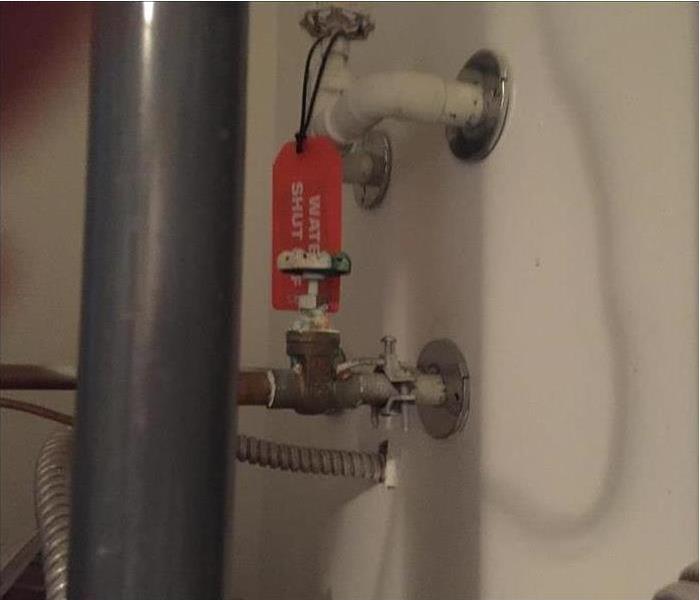 It pays to know where your water shut-offs valves are located, and if they are operational.
It pays to know where your water shut-offs valves are located, and if they are operational.
Plumbing maintenance may not be the most exciting topic, but it is well worth your attention! By regularly examining your plumbing system, and performing preventative maintenance, you can save yourself from both costly repair bills and the slow, steady expense caused by drips and leaks. Here is a maintenance checklist to help you stay ahead of common plumbing problems.
- Water heater: Many plumbers recommend draining and cleaning your water heater annually. Most people hire a professional to handle these tasks, due to their technical nature, and often they are even included in your plumbing fixture’s service contract.
- Valves: Locate all your shut-off valves and turn them off, then back to their original position, to make sure they would not be stuck open in the event that you need to shut the water off. While you are at it, look them over for any sign of corrosion, which could lead to an undetected leak. Replace any valves that are not working properly. Finally, make sure that your entire family knows where your shutoff valves are located, especially the main one, since this is very valuable information in case a leak occurs.
- Leaks: Leaks can develop in many different places in your plumbing system and should be addressed immediately to curtail waste and water damage. Periodically check for any of the following signs of trouble: soft flooring near toilets, bathtubs, dishwashers, water heaters or washing machines; dampness inside sink cabinets; soft walls or loose tiles that could signal a leak inside a wall; pipes with rust or mineral deposits; constant dampness around faucets or toilets; and finally toilets that keep running after being flushed. Use water shut off valve or water leak detection systems to alert you when water leaks occur.
- Old or malfunctioning fixtures: Generally, toilets, dishwashers, washing machines, water heaters, and boilers that are more than 12 years old are good candidates for replacement. New appliances will be more energy and water efficient. Check the item’s serial number, since this often indicates the year it was manufactured. Companies use a variety of coding methods, so perform a quick internet search to find out what to look for. Additionally, replace old faucets with new, washer-less models to save on maintenance costs, and replace any hardened or cracked hoses on washers and dishwashers to reduce the risk of a rupture. The old adage “If it isn’t broken, don’t fix it,” does not always make sense when it comes to plumbing! Keep in mind that by swapping the old plumbing fixtures for new, more efficient models you could save money every month on your energy and water bills in addition to avoiding costly water damage repair bills.
- Caulking: Check and re-do any aging caulking around bathtubs, showers, toilets, and sinks that might be allowing water to penetrate the surrounding structure.
- Septic: If you have a septic system, any persistently marshy areas in your drainage field may signal a leak in your septic line. Although pumping a septic tank is an essential element of plumbing maintenance, there is no hard and fast rule governing how frequently you should pump the tank. It depends on several factors, like the number of people in your household, whether there is a garbage disposal, the size of your tank, its system design, and even the temperature in your region. Consult a septic expert to find out how often you should pump your septic tank.
- Low water pressure: Test for low water pressure by running water from your tub faucet and then opening the kitchen faucet. If the pressure decreases when you open the second faucet, you should get a plumber to analyze the problem. Low water pressure is often caused by a leak or sediment build-up in pipes.
- Drains: Clogged drainpipes can often be avoided by regularly cleaning your drains with an eco-friendly drain cleaner. One easy way to clean your kitchen garbage disposal is to send some ice through it to clean out any grease that may have accumulated inside. Also, look for bubbles escaping up from a drain while water is trying to go down, as this could indicate a drain vent problem.
Whether you perform these maintenance checks yourself or hire a professional to handle them, it is a worthwhile investment of your time or money. By taking preventative measures, you greatly reduce the risk that you encounter costly surprises down the road.
Source: Water Damage Defense
Remember, if disaster does strike, SERVPRO of Springfield and Sangamon, Morgan, Cass, Macoupin, Montgomery Counties is Here to Help! Give us a call 24/7 at 217-528-7775.
Keep Your Sump Pump Humming
8/2/2019 (Permalink)
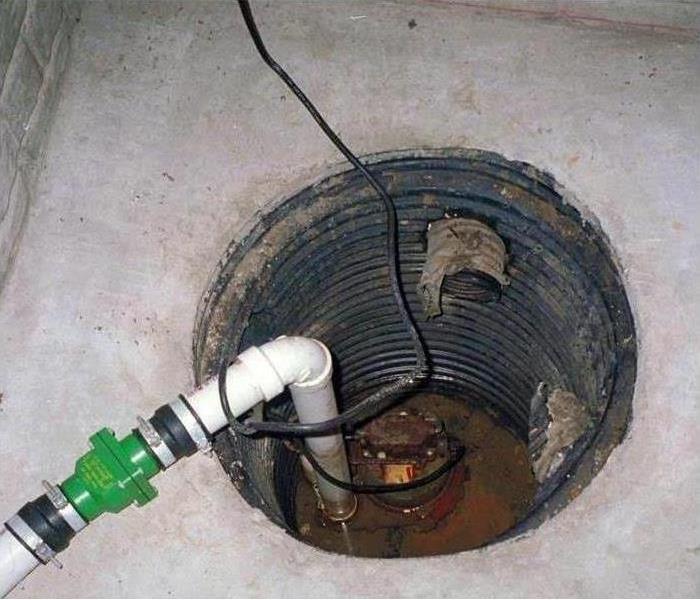 Regular maintenance of your sump pump will pay off during a storm when your basement doesn't flood.
Regular maintenance of your sump pump will pay off during a storm when your basement doesn't flood.
If you’ve ever had a flood of water in your basement after a storm, you know the value of a sump pump. A sump pump sits either beneath or above the floor of your basement and pumps out water that collects in the sump basin, discharging it to the outdoors.
But a sump pump does you no good if it’s not working when a storm hits and water gushes into your basement. Do these tasks at least once a year to stay dry:
- Clean and lubricate the pump. Unplug the pump, disconnect it from the discharge pipe and pull the pump out of the sump. Hose away any debris on the screen at the pump’s base and rinse off its housing. Lubricate the pump bearings, if required.
- Inspect the check valve. If the internal flap doesn’t swing freely, flush it out, and if you see mineral deposits, soak it in vinegar.
- Test the float switch. Pour a few gallons of water into the sump. If it comes on and sucks out the water, the switch (and pump) are good to go. If not, repair or replace the switch.
- Press the outlet’s test and reset buttons (per code, a sump pump has to be plugged in to a GFCI receptacle).
- Got a backup battery? Top up its cells with distilled water.
Remember, if disaster strikes, SERVPRO of Springfield and Sangamon, Morgan, Cass, Macoupin, Montgomery Counties is Here to Help! Give us a call 24/7 at 217-528-7775.
Laminate Flooring During a Water Damage
11/1/2018 (Permalink)
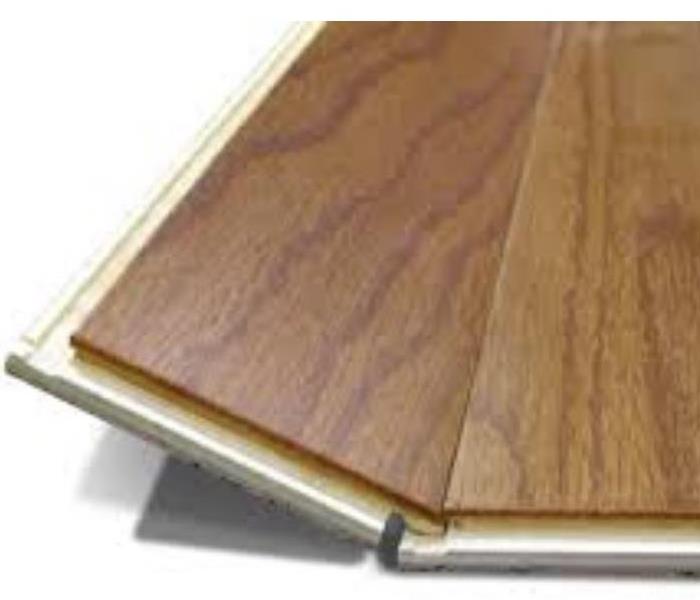 Laminate flooring comes with its own set of rules when it comes to water damages.
Laminate flooring comes with its own set of rules when it comes to water damages.
With all the different types of flooring options we have available in our homes today, it should come as no surprise that the most common concern after a water damage has to do with the flooring. As long as the water damage is caught quickly, most carpet materials can be salvaged though the pads are replaced. And even most hardwood floors can be dried. But there is one type of flooring that can not be restored after a water damage has occurred and that is laminate.
Laminate flooring holds moisture that permanently compromises the material. As soon as it gets wet, it begins to warp and unlike its hardwood counterpart, the warping can not be reversed by drying. Laminate flooring also has a vapor barrier underneath of it that traps water. In order to allow proper air movement, the barrier has to be removed. If the laminate and vapor barrier are not properly handled after a water damage, more damage can occur from mold and mildew.
Be sure to contact local professionals to assist you if you experience a water damage. SERVPRO® of Springfield is available 24/7 at 217-528-7775.
Spotting a Hidden Bathroom Leak
9/25/2018 (Permalink)
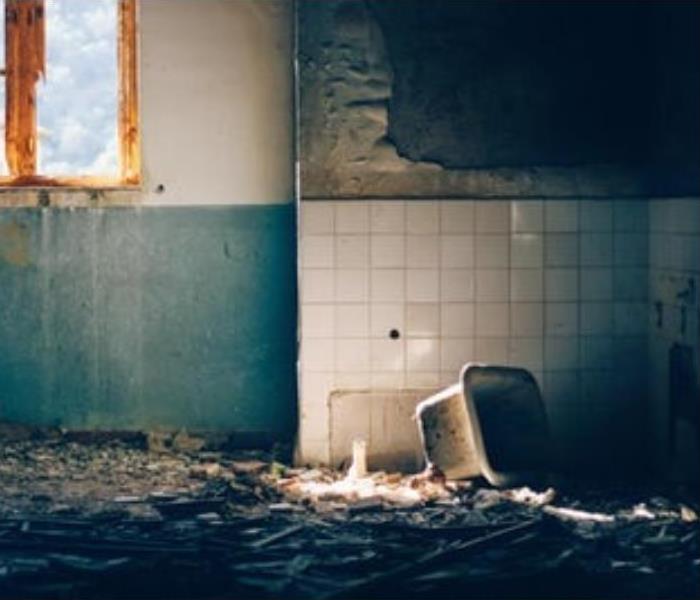 Paying attention to damages early on can save major headaches in the end.
Paying attention to damages early on can save major headaches in the end.
SERVPRO® of Springfield knows it is often the water that you cannot see that causes the most damage. Leaks that go undetected and therefore, untreated, can become a costly mess. They can damage walls, ceilings, and flooring. The sooner a leak can be detected, the less damage it will be able to cause.
Signs of a Hidden Leak:
- Mold or Mildew
- Mold thrives in moist, dark areas. If you notice mold or mildew growing on a wall or in corners, you can be sure water is leaking from a nearby pipe. There may also be a stagnant odor that is coming from the affected area.
- Damaged Walls or Ceilings
- A wall that is stained, warped or that has wallpaper beginning to bubble usually is telling you there is a moisture problem. When drywall gets wet, it becomes soft and will eventually begin to warp. Similarly, when a leak reaches the ceiling, it causes it to stain and sag.
- Damaged Flooring
- If the floor is buckling, cracking or becoming spongy there may be water damage. Tile can become loose and hardwood can bubble.
If you suspect water damage, call SERVPRO® of Springfield to assist with clean up. We are available 24/7 at 217-528-7775. Remember, we are Here to Help!®
Avoiding Sump Pump Failure
8/24/2018 (Permalink)
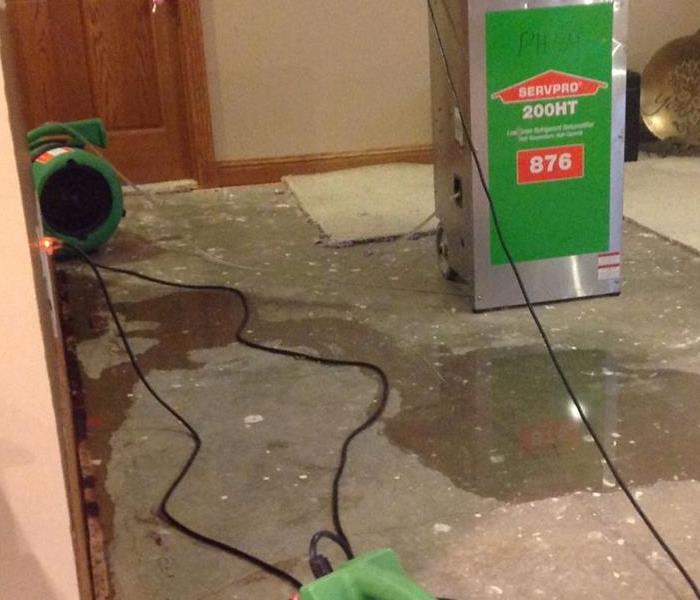 Air movers and a dehumidifiers placed after a sump pump failure.
Air movers and a dehumidifiers placed after a sump pump failure.
Sump pumps are usually installed in order to provide peace of mind, however, SERVPRO® of Springfield knows that sump pump failure is one of the biggest culprits for residential water damages. There are several reasons a sump pump can fail:
- Loss of Power: When the power goes out during a storm or a heat wave, the sump pump will not be able to drain water. Having a back-up generator specifically for the sump pump will keep water from pooling.
- Improper Installation: Following manufacturer instructions when installing the sump pump or bringing in a professional is key! Making sure the sump pump is the correct size and properly installed will make a huge difference with how it functions in the long term.
- Age: The average life of the sump pump is about 10 years. As it ages, the efficiency of the pump starts to become reduced.
- Clogged Pipes: The discharge pipe can become clogged with debris. Installing a grate or protective cover can keep the pipe clear and prevent overflow.
- Maintenance: Regular maintenance on the sump pump is key to keeping performance at peak efficiency. Cleaning the unit 3 to 4 times a year and having the unit checked by a professional bi annually can greatly reduce the chance of failure. Also, be sure to check the position of the float and adjust it as necessary to avoid any jams with the switch.
Keeping these basic tasks in mind can make a big difference in how your sump pump functions and may reduce the likelihood of a future damage. If a sump pump failure does happen, do not face it alone. Contact a local professional with around the clock availability with SERVPRO® of Springfield at 217-528-7775.
Water Damage Protocol with SERVPRO® of Springfield
8/6/2018 (Permalink)
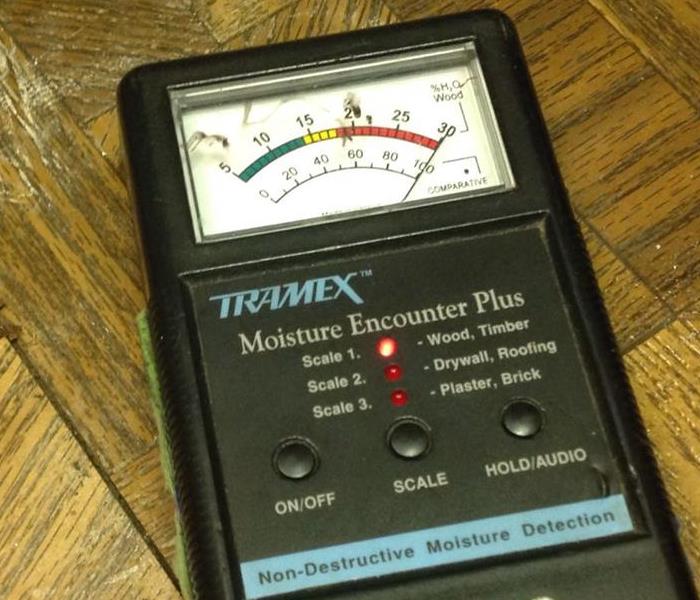 A non-invasive moisture meter.
A non-invasive moisture meter.
SERVPRO® of Springfield water damage technicians utilize a simple, yet effective system to ensure that the damage is contained and ready to be cleaned and restored. Once a tech arrives on the scene of the damage, they make an assessment. During this assessment, special tools are used to determine how far the water has migrated both horizontally and vertically across any surfaces the water has come into contact with. A non-invasive moisture meter tracks the water on hard finish surfaces while an invasive moisture reader is utilized for carpets/rugs. Ensuring that all water damage is found during this stage is crucial as any overlooked areas will delay drying and has the potential to cause problems later on.
Once a damage perimeter has been established, the tech will create a drying plan. The drying plan will either be “aggressive” or “disruptive”. An “aggressive” method means that warm, direct airflow is used to dry wet items in place. This method is used when contamination and damage are not a concern. The “disruptive” method usually requires affected materials to be removed or perforated in order for drying to occur. Contamination, damage, cost or customer concerns are all factors in determining if a “disruptive” method will be used.
After a plan of action has been established, the SERVPRO® of Springfield crew comes in to extract water, elevate furniture on blocks, and set up equipment. They may perform other actions such as relocating furniture and removing damaged drywall and insulation or spraying an antimicrobial. Each damage is different and as such no plan for drying will ever be exactly the same. The crew will monitor the drying process every 24 hours to ensure that progress is being made. If, for some reason, a change is not noticed. A new plan is put into place until progress is seen. The size of the job determines the overall time frame but a noticeable decrease in moisture and humidity levels should be readily seen once a plan has been put into effect for 24 hours. When the drying process has been completed, the crew removes the equipment and cleans up any mess left behind. We do our best to make it “Like it never even happened.”
If a water damage occurs at your home or business, please give SERVPRO® of Springfield a call at 217-528-7775.
Extraction after a Water Damage
8/3/2018 (Permalink)
Carpet and padding can hold gallons of water. When flooding occurs indoors, carpet is one of the first things that attract and trap water. As a result, mold and mildew can begin to grow in as little as 48 hours. It is imperative to extract the water quickly and effectively in order to ensure that secondary damage and microbial growth does not occur.
The quickest way to extract water out of carpet is with a weighted wet/dry vacuum. The water damage technicians at SERVPRO® of Springfield utilize industrial grade equipment in order to accelerate the process. After the water has been extracted, air movers and dehumidifiers are set up in order to remove any excess moisture.
Dealing with wet carpet is not fun, but you don’t have to handle it alone. Call SERVPRO® of Springfield at 217-528-7775. We are Here to Help®.
Appliances Can Cause Water Damage in Your Home and Business
7/31/2018 (Permalink)
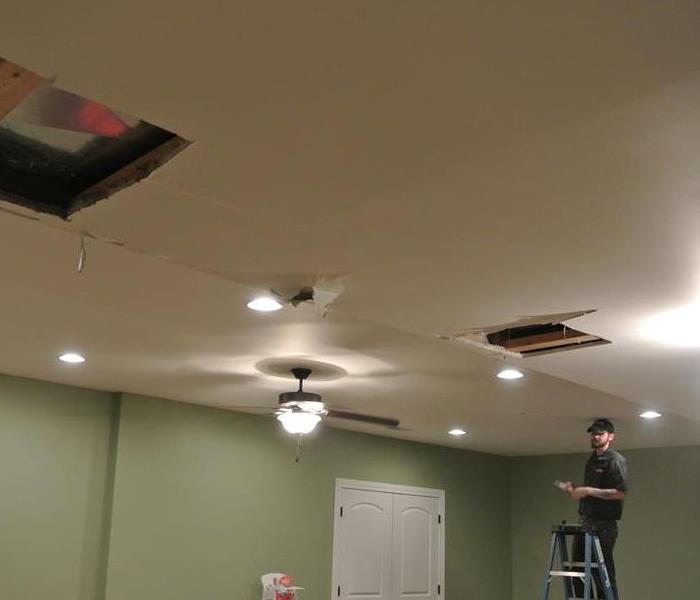 The washing machine on the 1st floor caused damage in the basement!
The washing machine on the 1st floor caused damage in the basement!
SERVPRO® of Springfield knows that water damages have a variety of causes. One of the more frequent causes are appliances. Here is a list of the most common culprits when it comes to water damage caused by an appliance.
- Washing Machine - The hoses to and from the washing machine can become cracked or loose. If this happens water can start to leak out. Check your machine monthly for hose damage.
- Air Conditioner - The water from the air conditioner can overflow if not drained properly. Check the a/c unit regularly to ensure that water is not leaking out.
- Hot Water Heater - It is recommended that you replace your water heater every ten years as corrosion and sediment build up can cause the lines to burst. Getting a yearly inspection on your water heater will greatly reduce the risk of water damage.
- Dishwashers - Pay attention to the hoses and valves on your dishwasher. They can become blocked or overwhelmed with sediment or detergent.
If an appliance water damage does occur, call your local water damage technicians at SERVPRO® of Springfield at 217-528-7775.
Let SERVPRO® of Springfield Handle that Mess
6/18/2018 (Permalink)
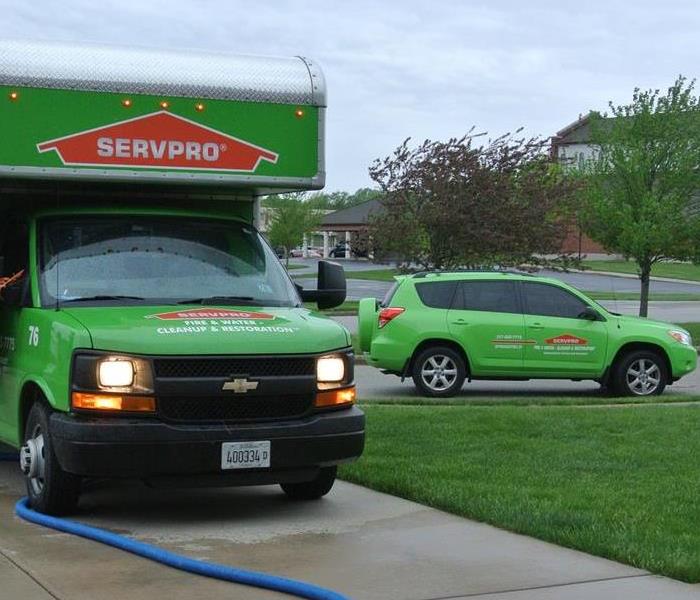 Call your local SERVPRO® of Springfield team!
Call your local SERVPRO® of Springfield team!
Did you know SERVPRO® of Springfield specializes in black water damage? Black water damage is a water damage situation that can go from bad to worse when you try to clean it up on your own. Especially when the damage comes from a toilet overflow, sewer back up or other black water source as the water can contain harmful bacteria. Black water is water loaded with feces, grease, pharmaceuticals, and/or food chunks. Extended exposure to black water can lead to infections and illness that can become life threatening over time. These types of damages should be left to the local professionals at SERVPRO® of Springfield as specialized training and equipment are required to clean away black water and black water damage in order to avoid health consequences.
If you experience a black water damage in your home or office, please call the professionals. SERVPRO® of Springfield is here to help 24/7 at 217-528-7775.
Clogged Gutters Equals Water Damage for Springfield, IL Homes
6/4/2018 (Permalink)
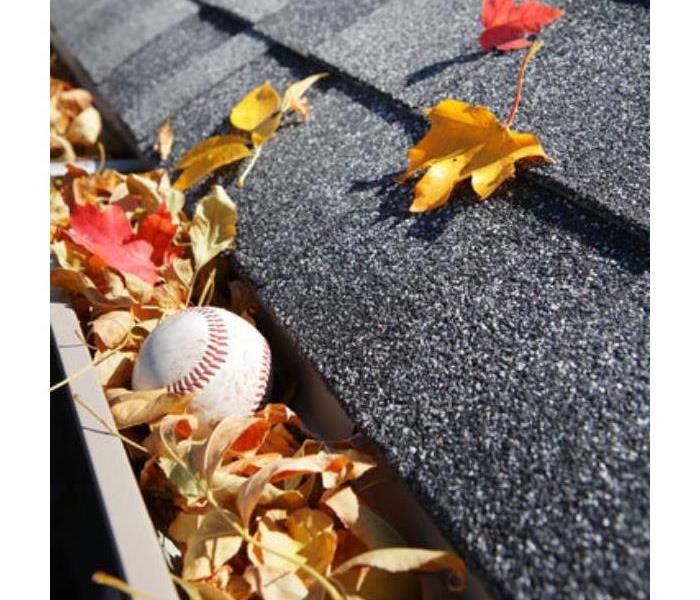 All sorts of items can clog a gutter!
All sorts of items can clog a gutter!
SERVPRO® of Springfield would like to remind everyone that being proactive is the best way to prevent damage. And even though it is one of the more time consuming chores, keeping the gutters around your home in good shape can greatly reduce the chances of a water damage disaster.
- Clogged gutters can result in basement flooding, roof damage, erosion and foundation damage. Regularly check and clear the gutter system around your home to ensure there are no problems.
- Fixing loose gutters can also mitigate damage. Loose gutters will allow water to flow along the roof which can affect siding, doors, windows and foundation.
- Splash blocks are important as they direct the water away from the home. Without a splash block the water can build up around the foundation of the home and cause flooding and mildew.
Hopefully, by checking out the gutter system in your home you will be able to stop disaster before it begins. But if, by chance, something does happen, SERVPRO® of Springfield’s water damage technicians are here to help 24/7. Call us at 217-528-7775
Frozen Pipes
11/1/2017 (Permalink)
With the holiday season getting closer and the temperatures getting cooler the American Red Cross offers these tips to help prevent your pipes from freezing during the winter months.
- Keep garage doors closed if there are water supply lines in the garage.
- Open kitchen and bathroom cabinet doors to allow warmer air to circulate around the plumbing. Be sure to move any harmful cleaners and household chemicals up out of the reach of children.
- When the weather is very cold outside, let the cold water drip from the faucet served by exposed pipes. Running water through the pipe - even at a trickle - helps prevent pipes from freezing.
- Keep the thermostat set to the same temperature both during the day and at night. By temporarily suspending the use of lower nighttime temperatures, you may incur a higher heating bill, but you can prevent a much more costly repair job if pipes freeze and burst.
- If you will be going away during cold weather, leave the heat on in your home, set to a temperature no lower than 55° F.
-Source: American Red Cross
If you do have a pipe that freezes SERVPRO of Springfield is only a phone call away at 217-8528-7775
Assessing Water Damage
9/18/2017 (Permalink)
A water damage occurs when a pipe breaks, plumbing backs up, flood waters rise, or a number of other reasons in which water enters a structure.
Water restoration is the act of making it "Like it never even happened" which is our specialty at SERVPRO of Springfield.
Many homeowners who experience a water damage often don't know where to start. The first step is assessing the situation and responding appropriately.
There are two criteria for categorizing water damages: Class, and Category.
The Class of water damage refers to the extent of damage and how much moisture has been soaked up (or bound) in the building material.
There are 4 Classes of water damages:
Class 1 - water is confined to a small area and materials absorb very little water.
Class 2 - where wet materials represent approximately 5-40% of combined floor, wall, and ceiling surface area in a space
Class 3 - wet materials represent more than 40% surface area
Class 4 - this class of damage is a special case where water has been deeply absorbed into the structure and special methods need to be employed beyond a regular drying plan.
Category refers to the level of contamination caused by the water:
Category 1 - originates from a sanitary source, meaning a supply line or sink overflow with no contaminants
Category 2 - water that contains some contaminants such as washing machine or dishwasher rinse water
Category 3 - this includes all water that is significantly contaminated and can cause illness if ingested. This would include sewage, standing water with microbial growth, or water from a toilet containing fecal matter
If you have a water damage that needs to be assessed and for help with the cleanup call SERVPRO of Springfield at 217-528-7775
Water damage basics
9/18/2017 (Permalink)
Water damages affect many homes and businesses every year. Each damage is unique but there are a few basic principles that can be applied once the damage has occurred. The following are some places to start in order to get your restoration project running smoothly.
First, has the source of the water intrusion been stopped? This could be as simple as turning off the water valve to the main house supply line. Other times this may involve getting a plumber involved to unclog a drain that has backed up or replacing a sump pump that has quit working.
Next, have you called a professional to help you assess your damage? This could include your insurance company to help you get more information about what steps they require and your coverage/deductible amounts. This could also include contacting your local SERVPRO to help assess and also mitigate any further damage.
If you need help assessing your water damage and figuring out the next steps to get your home or business back to normal contact SERVPRO of Springfield 217-528-7775
SERVPRO of Springfield 24 hour emergency water damage service
8/24/2017 (Permalink)
SERVPRO of Springfield is available 24 hours a day for water emergencies, large or small. When you are dealing with water damage, immediate action is crucial. A delay of just a few hours can greatly increase the severity of the water damage.
We Answer the Phone Ready to Help
Call Today - 217-528-7775
We understand that when you call us, you may be feeling confused, stressed, and vulnerable. You need an expert to guide you through this crisis. SERVPRO of Springfield has the specific water damage training and experience to help you through this tough time. We specialize in water damage restoration—in fact, it's the cornerstone of our business.
What to Expect
When you call, we will ask several questions regarding your water damage emergency. These questions will help us determine what equipment and resources to bring, including how many trained SERVPRO Professionals may be needed.
Our SERVPRO Representative will ask several questions:
- Your name and contact information
- Your insurance information (if applicable)
- The street address of the water-damaged home or business
- When did the flooding or water damage occur?
- What caused the water damage (if known)?
- Is there electricity available (on-site)?
About SERVPRO of Springfield
SERVPRO of Springfield specializes in the cleanup and restoration of residential and commercial property after a fire, smoke or water damage event. Our staff is highly trained in property damage restoration. From initial and ongoing training at SERVPRO’s corporate training facility to regular IICRC-industry certification, rest assured our staff is equipped with the knowledge to restore your property.
Meet Our Crew
Sewage Back-ups
8/1/2017 (Permalink)
Sewage is one of the most dangerous substances to enter homes or buildings. It contains fungi, bacteria and viruses, many of which are disease-causing. Unfortunately, many people fail to understand the hazards that sewage presents, particularly for the very young or very old, or for those with compromised immune systems or respiratory problems.
The IICRC complied guidelines for professional sewage clean-up called the Standard for Water Damage Restoration (S500).
Here are the key principles homeowners should know about sewage back-ups:
- Sewage contains a variety of pathogenic – disease causing – fungi, bacteria, viruses and parasites. Anyone who works on sewage losses must have updated vaccinations, including one for Hepatitis B.
- Sewage exposure is particularly dangerous for people with weakened immune systems, including anyone under two or over 60, those who are pregnant, ill, recovering from surgery, on prescription drugs or chemotherapy, or are AIDS victims.
- It is not safe to stay in a building that’s flooded with sewage unless the contaminated area can be completely sealed off and placed under controlled air flow so that there will be no cross contamination of unaffected areas.
- Highly absorbent sewage-saturated materials, such as carpet, pad, upholstery, bedding, wicker, paper or even fabrics that can’t be washed in hot water (130°F/54°C) for at least 10 minutes, must be contained and disposed of properly. This goes for sewage-saturated drywall, insulation and several other structural materials too. There’s simply too great a health risk involved if any of these materials are dried in place and cleaned only.
- Only the most highly trained professionals should attempt sewage remediation work. Then, a “third party” indoor environmental professional can provide post-remediation verification or “clearance testing” to ensure that the home or building is safe to re-occupy.
-Source:IICRC
Call your local SERVPRO today for help with sewage back-ups at 217-528-7775
Gym Floor Drying
6/6/2017 (Permalink)
Whether the cause is a roof leak, sprinkler malfunction, or accident, wet gym floors create a stressful situation for everyone involved. Wood gym floors are designed to take a beating but when they get soaked through with water it can be a whole other level of damage. From swelling, heaving and cupping to completely buckling of the floor, water can throw some serious punches.
Traditionally, if a hardwood sports floor was wet enough to cause these problems tear-out and replacement was considered the only option. However, specialty equipment, quick action, and a thorough knowledge of the most current protocols can be enough to save many floors.
A new hardwood gym floor can cost upwards of multiple hundreds of thousands, not to mention the charges for removal of the old floor. Restoration methods used by SERVPRO of Springfield are proven to improve the chances of being able to save this flooring rather than replacement.
The difference between flood and sewage clean-up
6/1/2017 (Permalink)
This is a great description straight from the Institute of Inspection Cleaning and Restoration Certification (IICRC) website:
"Water damage can be deceptive. Water penetrates into structural cavities creating trapped pockets of saturation. The detection of water in these areas can often only be discovered with sophisticated moisture detection meters. Undetected moisture will continue to cause damage. This damage, at a minimum, will cause odors. Greater damage will surface when materials delaminate, shrink, split and further deteriorate to where costly repairs are required.
More than just removing excess water, IICRC-certified restorers have the knowledge and equipment to further dry a home or facility (including substructure materials) completely back to preloss conditions. Through timely response and the careful monitoring of water damage, mold and other health issues can be prevented. If water damage has been present too long, mold will occur."
It is also important to determine the source so that an appropriate response can be applied. Many times the response can be shaped by determining the source of the intrusion. If the source of the damage is from a flood or other clean water source the response may be much less destructive and more materials will be able to be saved. However, if the source is determined to be a contaminated source such as a sewage back up, even if the water appears clean and clear it is often times still very much contaminated as well.
"Sewage is one of the most dangerous substances to enter homes or buildings. It contains fungi, bacteria and viruses, many of which are disease-causing. Unfortunately, many people fail to understand the hazards that sewage presents, particularly for the very young or very old, or for those with compromised immune systems or respiratory problems.
The IICRC complied guidelines for professional sewage clean-up called the Standard for Water Damage Restoration (S500)."
Once you have determined the source a response can be chosen. The response generally falls under 2 different categories: Flood clean-up or Sweage clean-up.
Below are some tips suggested by the IICRC for Water Clean-up:
- Act quickly
- The severity of damage escalates the longer water sits and building components and contents stay wet, so time is of the essence in the aftermath of a flood. In fact, mold will grow within 48-72 hours, so aim to start removing water and drying the environment within 48 hours.
- Have a list of professionals on hand to call, and understand your insurance policy, as some only cover mold damage up to a certain amount, while others don’t provide any reimbursement for mold.
- Ventilate affected areas to prevent mold growth
- Mold loves moisture and organic materials such as paper or particleboard. In order to mitigate or slow damage, open windows if weather permits and place fans inside of them to keep air moving and maintain moderate temperatures. Work toward the fan as you clean to minimize cross contamination.
- Assess damage to items and materials
- Assess the type of water absorbed by items, such as rainwater, water from broken pipes, contaminated river water or bacteria-filled sewage.
- There are ways to salvage specialty items but the decision on whether to save or trash an item will vary depending on the dollar and sentimental value to the owner.
- It may not be worthwhile to salvage drywall, carpets and pads, mattresses, pillows, box springs and particleboard. On the other hand, it might be worthwhile to restore costly Persian rugs, leather couches and antiques or heirlooms. Wet clothing and many household fabrics may be salvageable through machine washing, and a 10-minute soak in detergent and hot water, to remove contamination and stains.
- The IICRC strongly recommends that in water damages where there are contaminants present (e.g., bacteria, sewage, mold) or where small children or immune-compromised individuals are present that an inspection be conducted by an appropriately trained restorer and remediator.
- Expose pockets of saturation
- Hidden and concealed pockets of saturation need to be opened for cleaning and drying.
- Layers between building materials hold water that must be discovered and removed or dried.
- On walls, find the water line and inspect at least a foot beyond it to make sure all damage, wet materials and mold are discovered. Remove and discard the damaged drywall and wet wall insulation.
- Wood base trim and hardwood can also be saved with the right equipment and the right circumstances if they can be accessed and completely dried on both sides.
- Remember to investigate concealed cavities such as behind walls, in mechanical spaces, under cabinets and furniture, and in crawl spaces.
- Conduct a thorough cleaning
- Durable, nonporous or semi-porous materials, such as studs and joists, hardwood flooring and vinyl products, can usually be cleaned with common cleaning products or specialized products with detergents.
- During cleaning, take care to protect areas that are unaffected by the water or mold.
- After a thorough cleaning of salvageable materials, a disinfectant solution may need to be applied in case of harmful bacteria from sewage, river water debris or even standing water that has gone bad.
- Professionals like water restoration and mold remediation contractors and indoor environmental professionals can help you decide what is best for your situation.
- Once you’ve cleaned the wet materials, conduct another round of cleaning. If you choose to vacuum, use a HEPA-filter vacuum to remove allergens, fine dust and spores.
- Confirm drying before reconstruction
- In order to prevent dry rot and structural damage, it’s important not to reconstruct or cover wood and other wet materials until the moisture content has been adequately reduced. A water restoration professional can confirm proper drying before reconstruction.
The difference between flood and sewage clean-up
7/5/2016 (Permalink)
This is a great description straight from the Institute of Inspection Cleaning and Restoration Certification (IICRC) website:
"Water damage can be deceptive. Water penetrates into structural cavities creating trapped pockets of saturation. The detection of water in these areas can often only be discovered with sophisticated moisture detection meters. Undetected moisture will continue to cause damage. This damage, at a minimum, will cause odors. Greater damage will surface when materials delaminate, shrink, split and further deteriorate to where costly repairs are required.
More than just removing excess water, IICRC-certified restorers have the knowledge and equipment to further dry a home or facility (including substructure materials) completely back to pre-loss conditions. Through timely response and the careful monitoring of water damage, mold and other health issues can be prevented. If water damage has been present too long, mold will occur."
It is also important to determine the source so that an appropriate response can be applied. Many times the response can be shaped by determining the source of the intrusion. If the source of the damage is from a flood or other clean water source the response may be much less destructive and more materials will be able to be saved. However, if the source is determined to be a contaminated source such as a sewage back up, even if the water appears clean and clear it is often times still very much contaminated as well.
"Sewage is one of the most dangerous substances to enter homes or buildings. It contains fungi, bacteria and viruses, many of which are disease-causing. Unfortunately, many people fail to understand the hazards that sewage presents, particularly for the very young or very old, or for those with compromised immune systems or respiratory problems.
The IICRC complied guidelines for professional sewage clean-up called the Standard for Water Damage Restoration (S500)."
Once you have determined the source a response can be chosen. The response generally falls under 2 different categories: Flood clean-up or Sweage clean-up.
Below are some tips suggested by the IICRC for Water Clean-up:
- Act quickly
- The severity of damage escalates the longer water sits and building components and contents stay wet, so time is of the essence in the aftermath of a flood. In fact, mold will grow within 48-72 hours, so aim to start removing water and drying the environment within 48 hours.
- Have a list of professionals on hand to call, and understand your insurance policy, as some only cover mold damage up to a certain amount, while others don’t provide any reimbursement for mold.
- Ventilate affected areas to prevent mold growth
- Mold loves moisture and organic materials such as paper or particleboard. In order to mitigate or slow damage, open windows if weather permits and place fans inside of them to keep air moving and maintain moderate temperatures. Work toward the fan as you clean to minimize cross contamination.
- Assess damage to items and materials
- Assess the type of water absorbed by items, such as rainwater, water from broken pipes, contaminated river water or bacteria-filled sewage.
- There are ways to salvage specialty items but the decision on whether to save or trash an item will vary depending on the dollar and sentimental value to the owner.
- It may not be worthwhile to salvage drywall, carpets and pads, mattresses, pillows, box springs and particleboard. On the other hand, it might be worthwhile to restore costly Persian rugs, leather couches and antiques or heirlooms. Wet clothing and many household fabrics may be salvageable through machine washing, and a 10-minute soak in detergent and hot water, to remove contamination and stains.
- The IICRC strongly recommends that in water damages where there are contaminants present (e.g., bacteria, sewage, mold) or where small children or immune-compromised individuals are present that an inspection be conducted by an appropriately trained restorer and remediator.
- Expose pockets of saturation
- Hidden and concealed pockets of saturation need to be opened for cleaning and drying.
- Layers between building materials hold water that must be discovered and removed or dried.
- On walls, find the water line and inspect at least a foot beyond it to make sure all damage, wet materials and mold are discovered. Remove and discard the damaged drywall and wet wall insulation.
- Wood base trim and hardwood can also be saved with the right equipment and the right circumstances if they can be accessed and completely dried on both sides.
- Remember to investigate concealed cavities such as behind walls, in mechanical spaces, under cabinets and furniture, and in crawl spaces.
- Conduct a thorough cleaning
- Durable, nonporous or semi-porous materials, such as studs and joists, hardwood flooring and vinyl products, can usually be cleaned with common cleaning products or specialized products with detergents.
- During cleaning, take care to protect areas that are unaffected by the water or mold.
- After a thorough cleaning of salvageable materials, a disinfectant solution may need to be applied in case of harmful bacteria from sewage, river water debris or even standing water that has gone bad.
- Professionals like water restoration and mold remediation contractors and indoor environmental professionals can help you decide what is best for your situation.
- Once you’ve cleaned the wet materials, conduct another round of cleaning. If you choose to vacuum, use a HEPA-filter vacuum to remove allergens, fine dust and spores.
- Confirm drying before reconstruction
- In order to prevent dry rot and structural damage, it’s important not to reconstruct or cover wood and other wet materials until the moisture content has been adequately reduced. A water restoration professional can confirm proper drying before reconstruction.
Pool Collapse
6/22/2016 (Permalink)
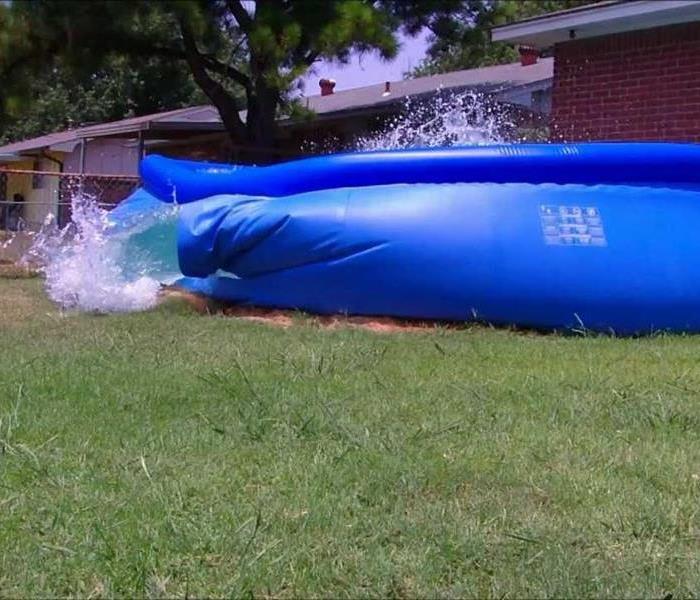 That's a whole lot of water!
That's a whole lot of water!
If you like to cool off during these HOT days be careful that you don't end up like this guy.
Hopefully all that water didn't go into a basement!





 24/7 Emergency Service
24/7 Emergency Service






